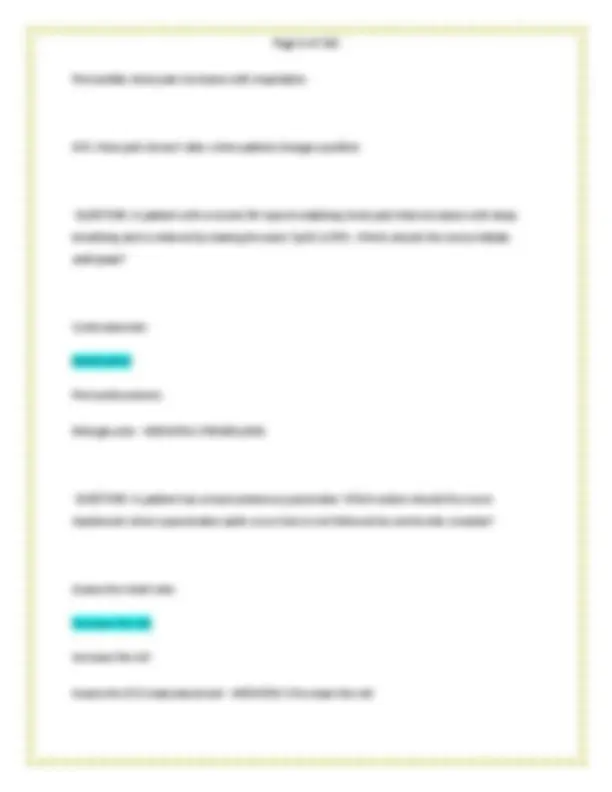
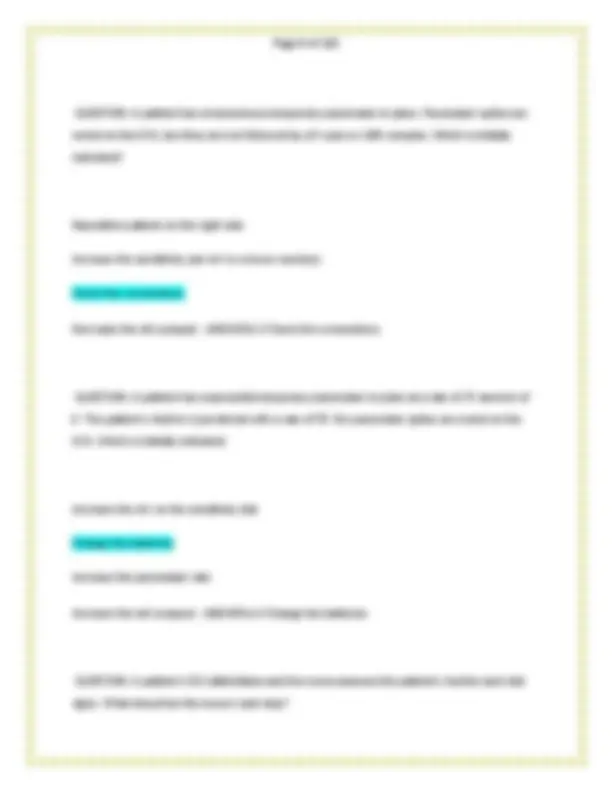
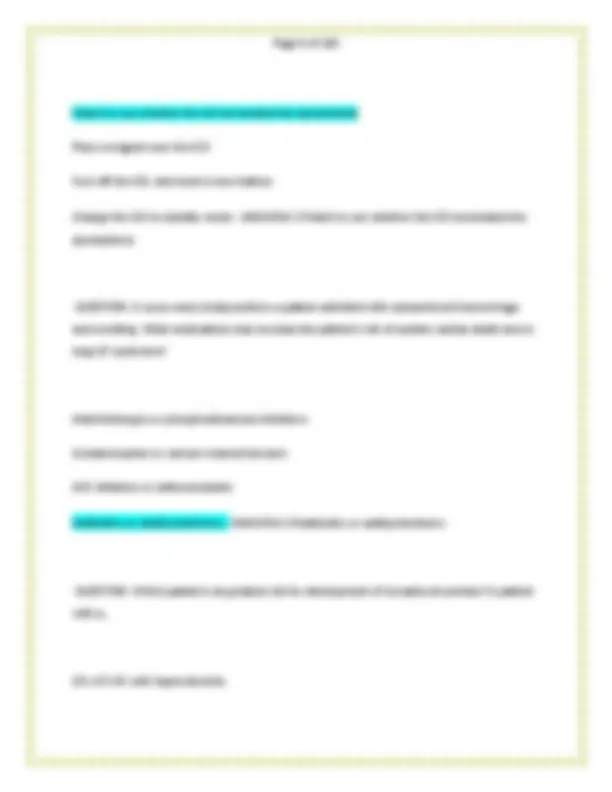
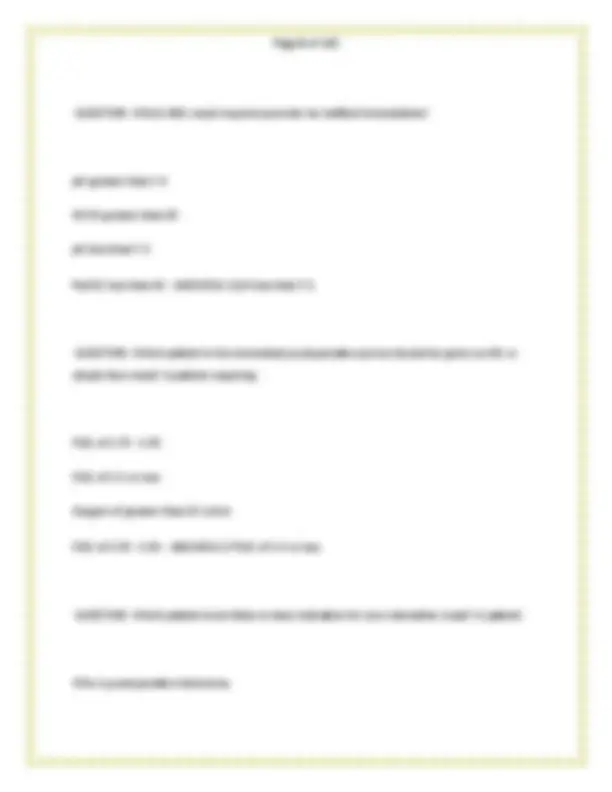
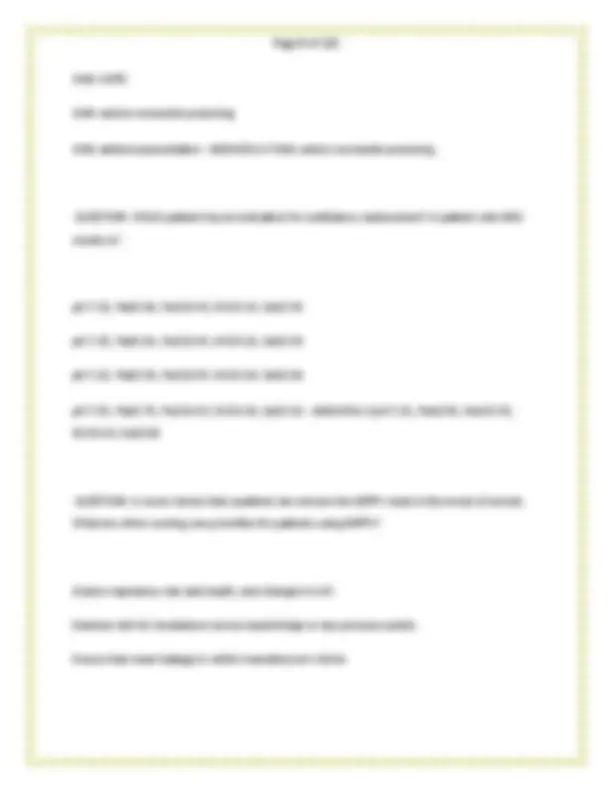
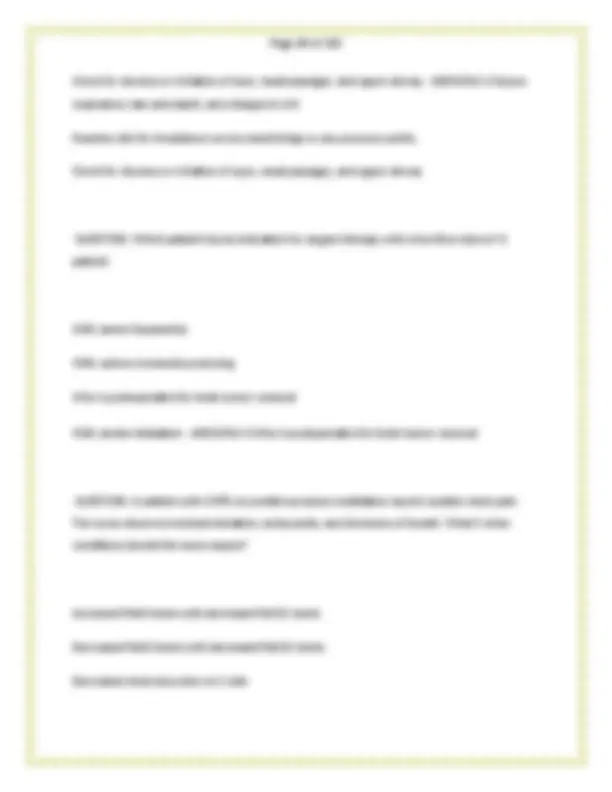
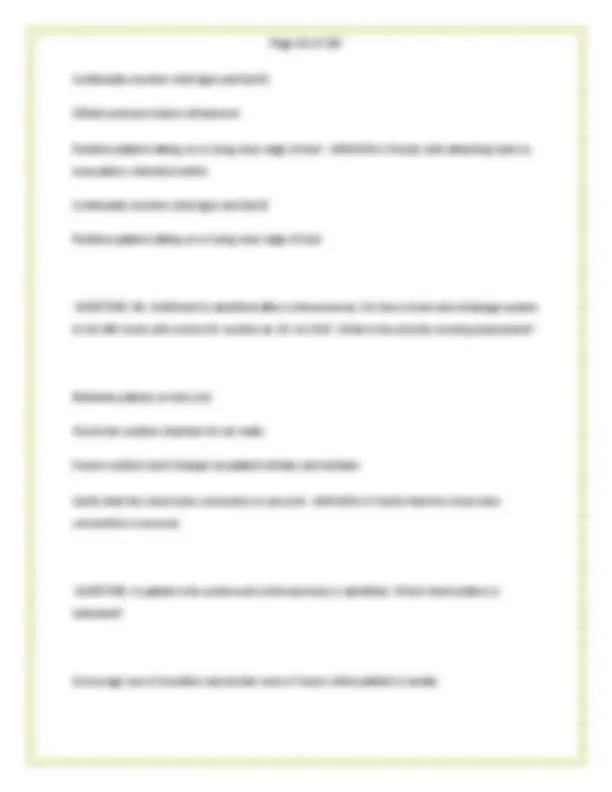
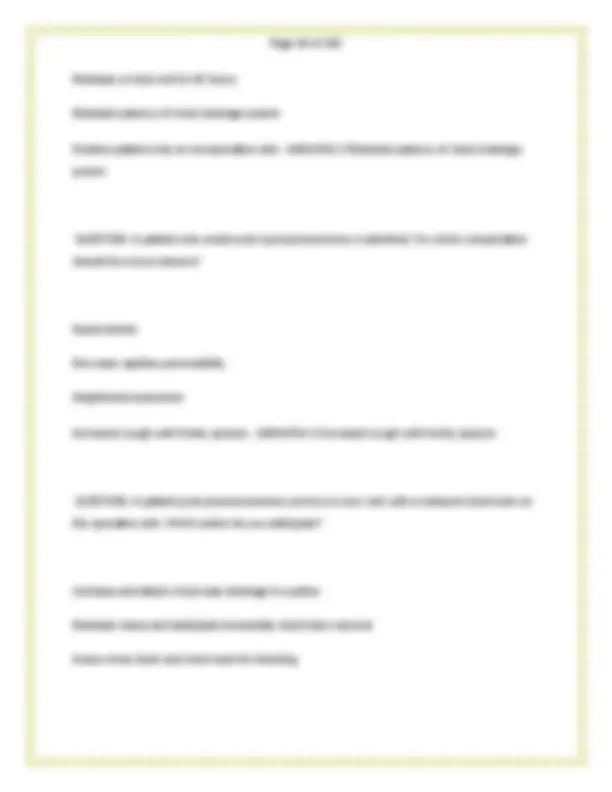
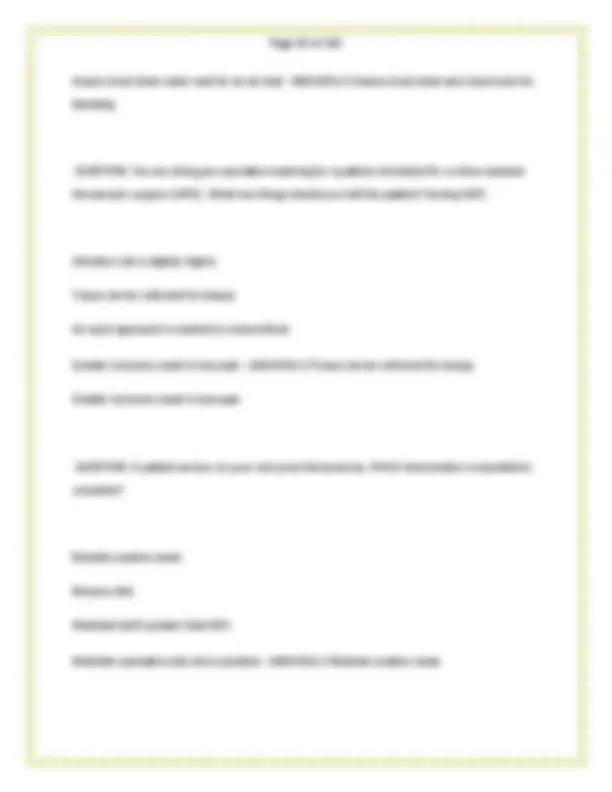
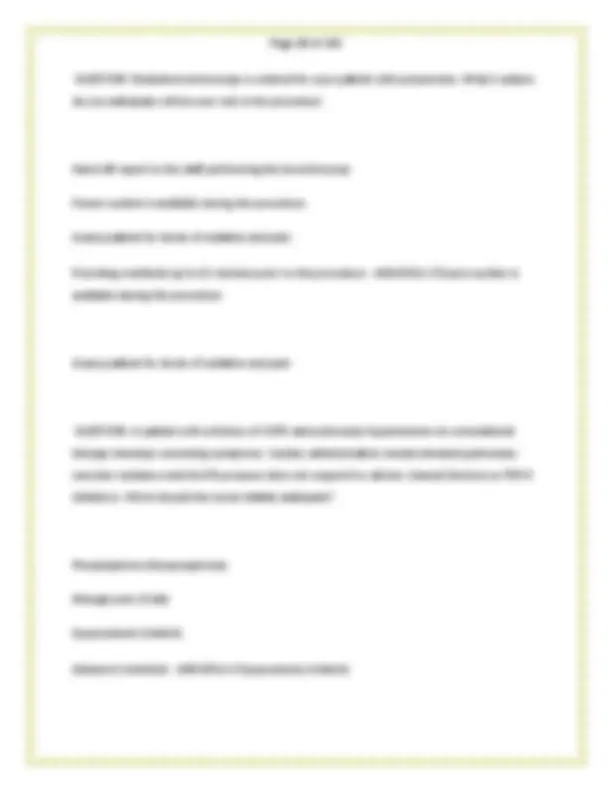
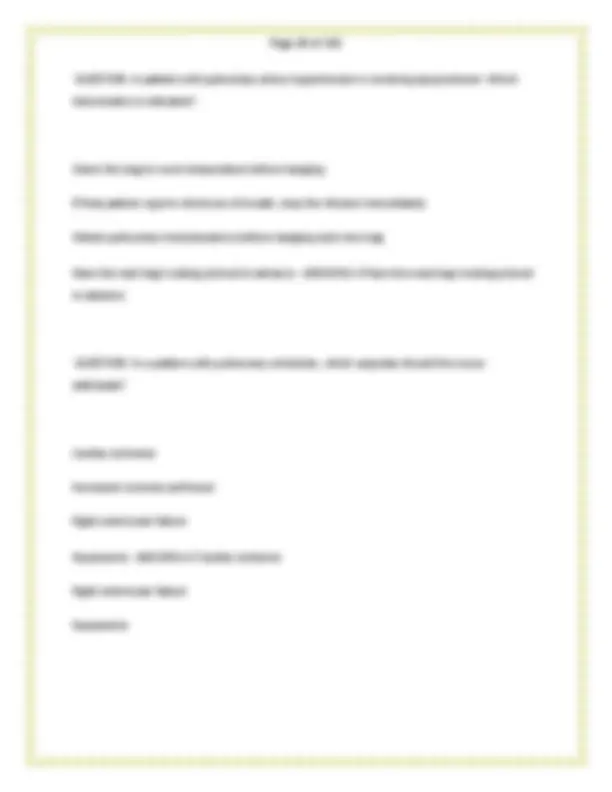
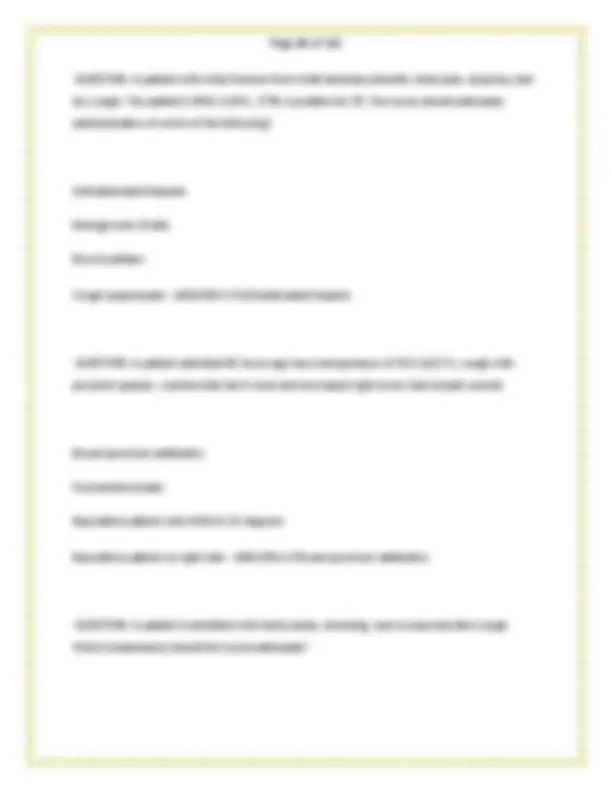
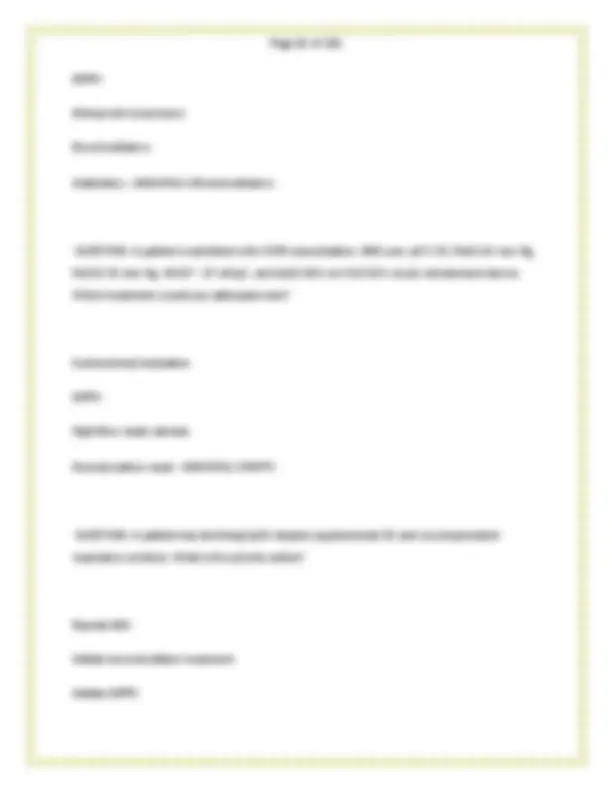
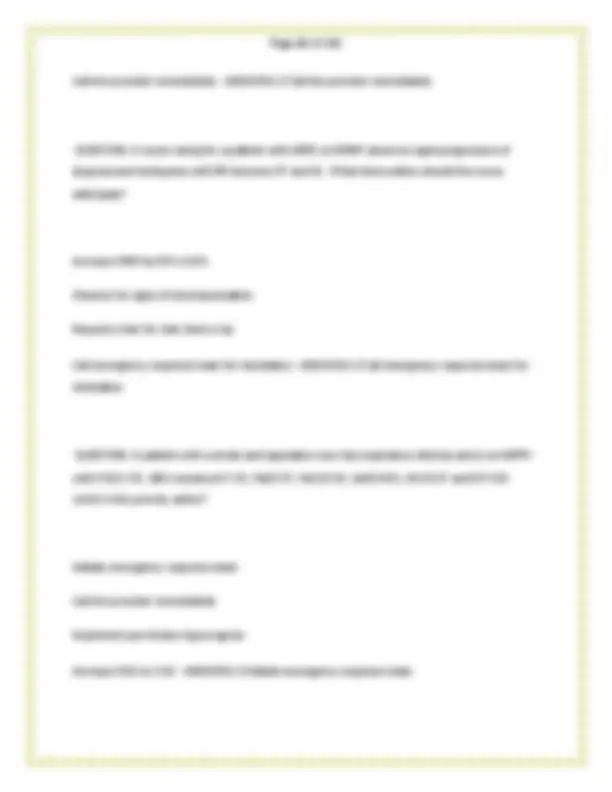
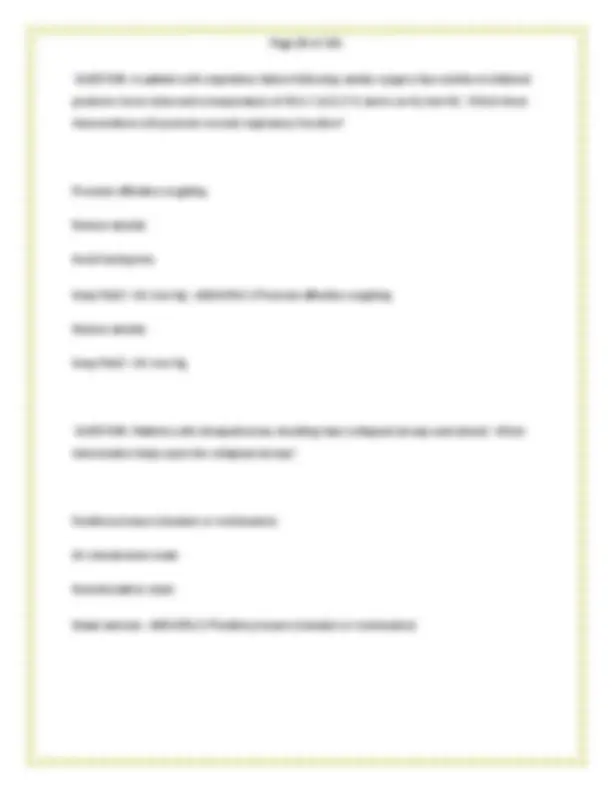
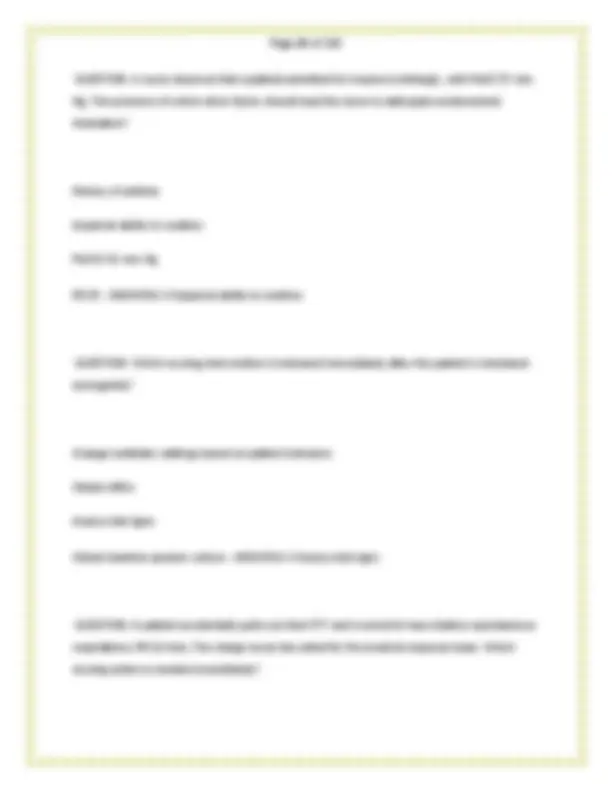
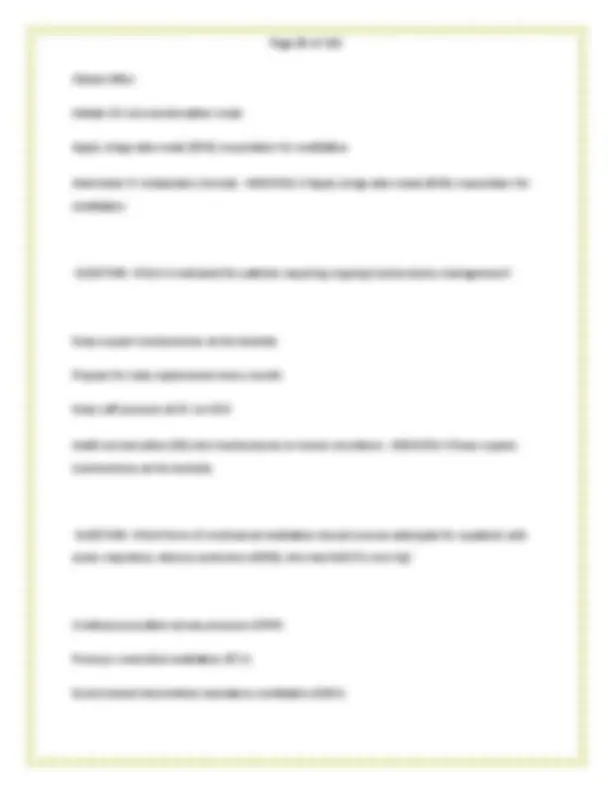
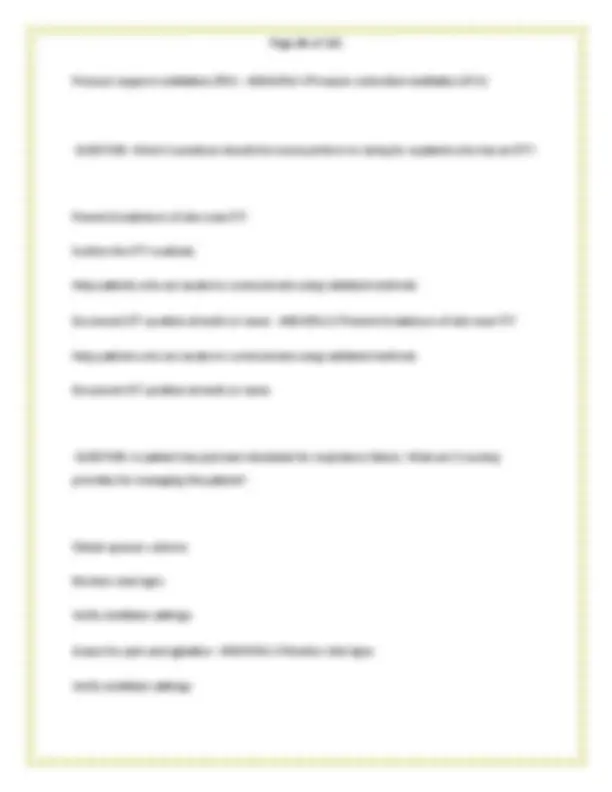
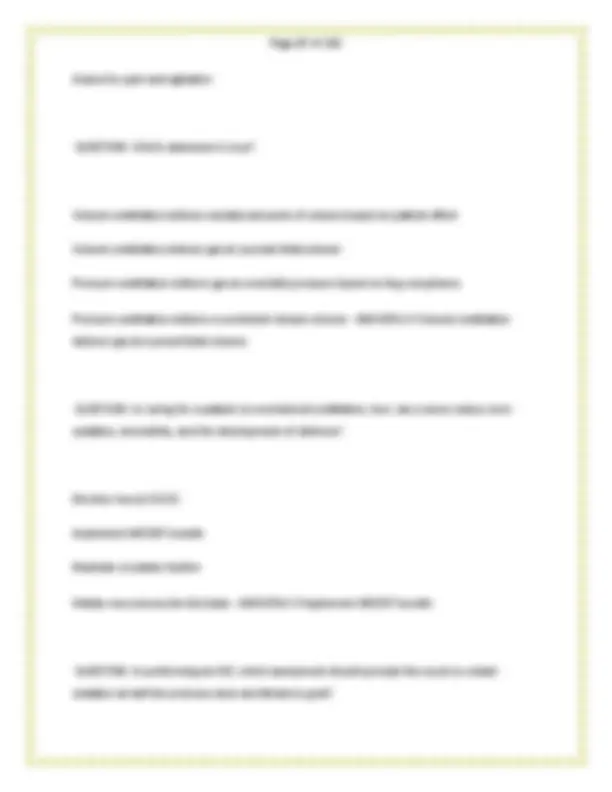
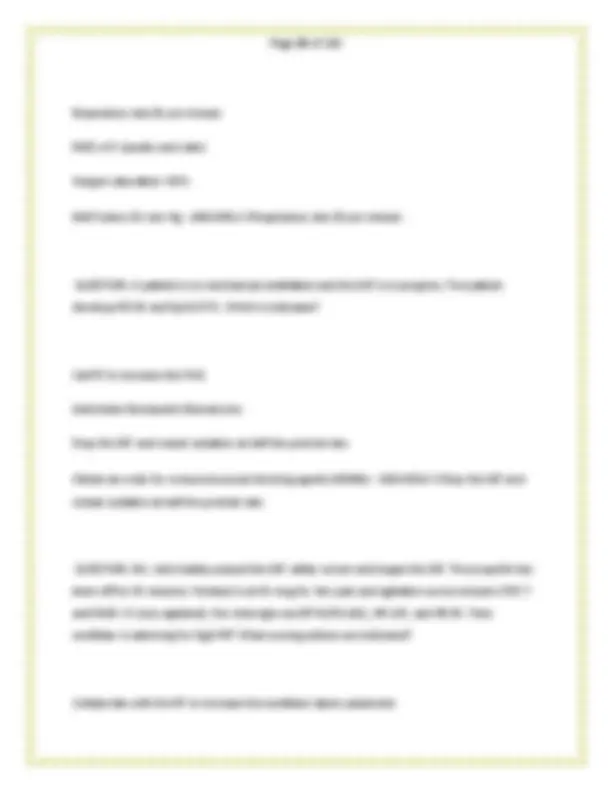
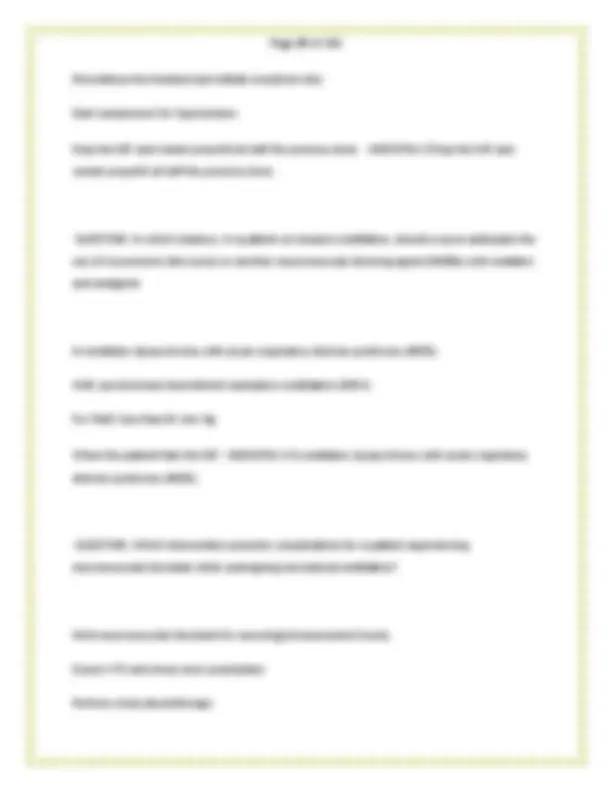

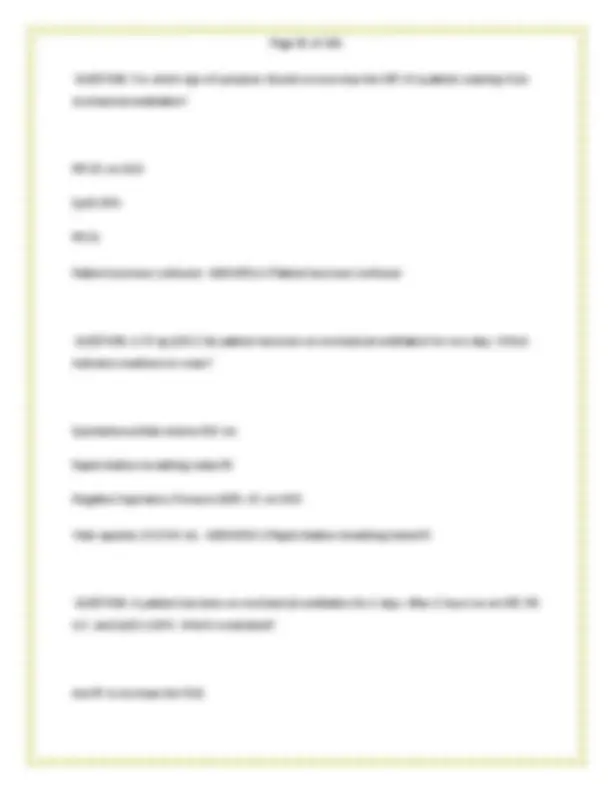
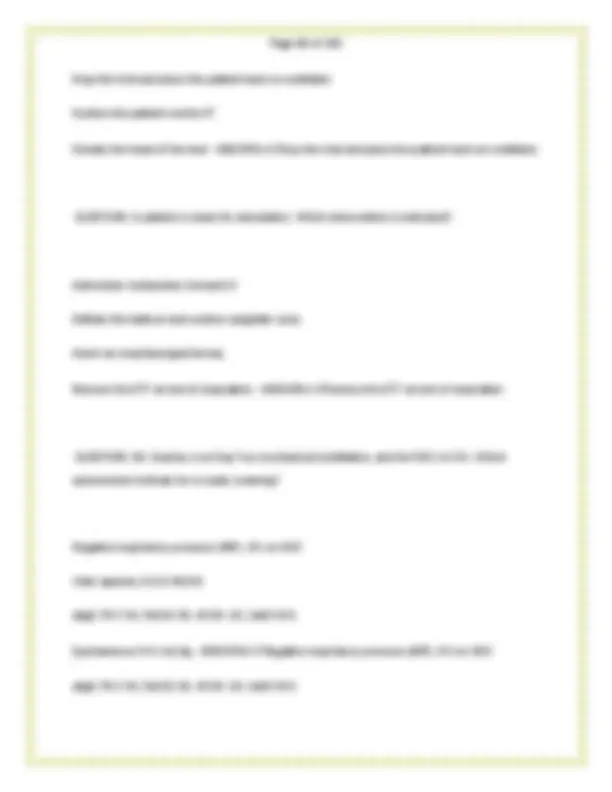
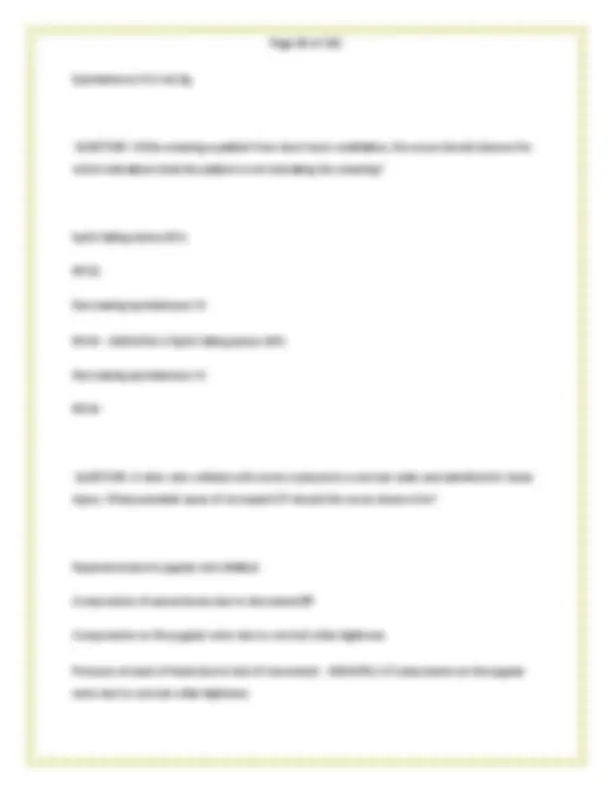
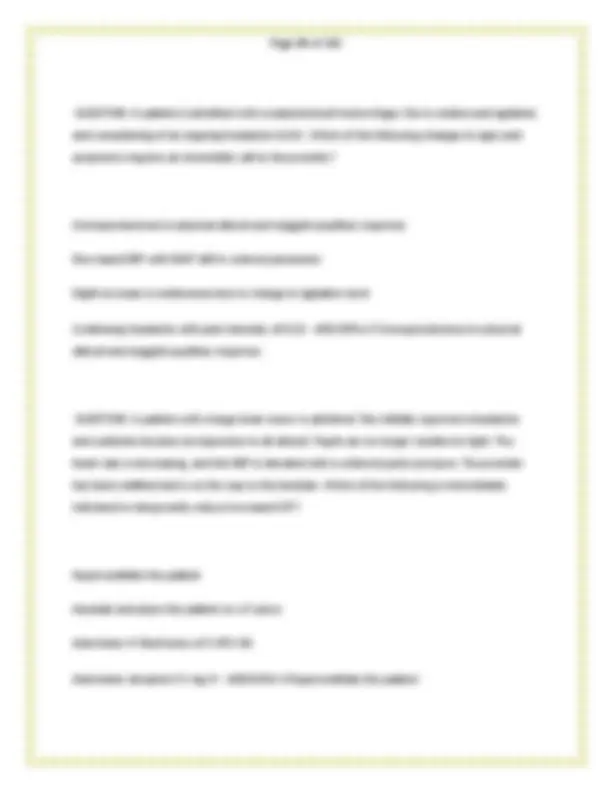
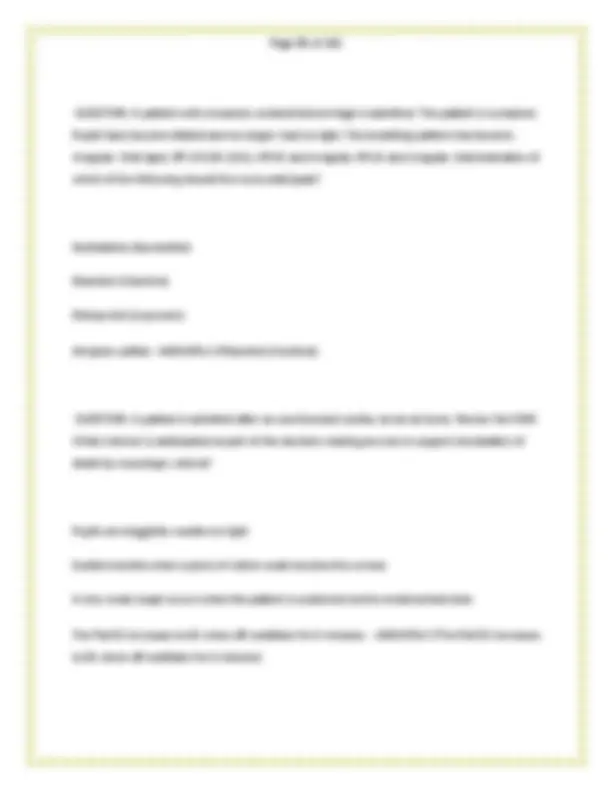

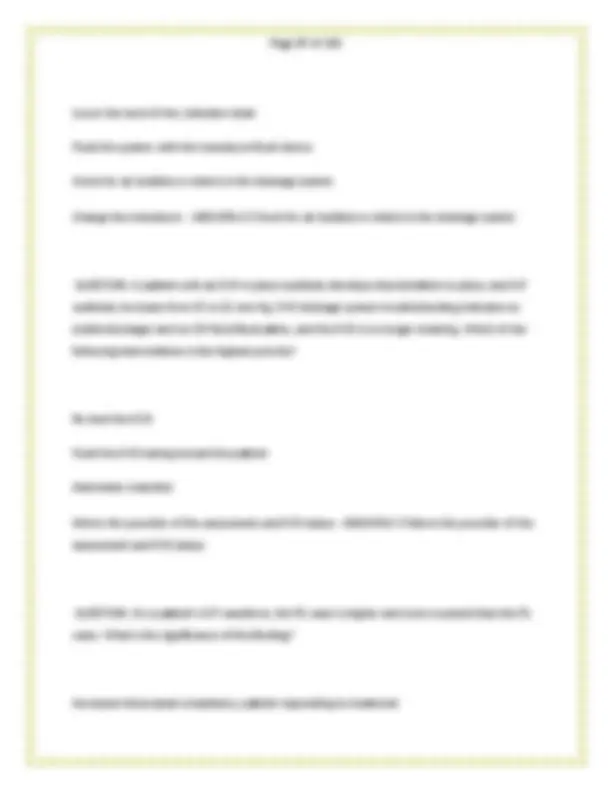
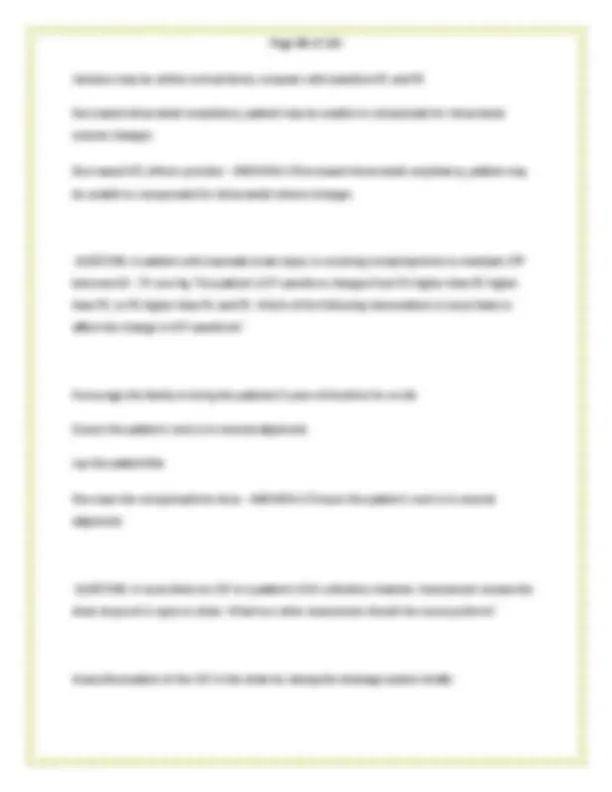
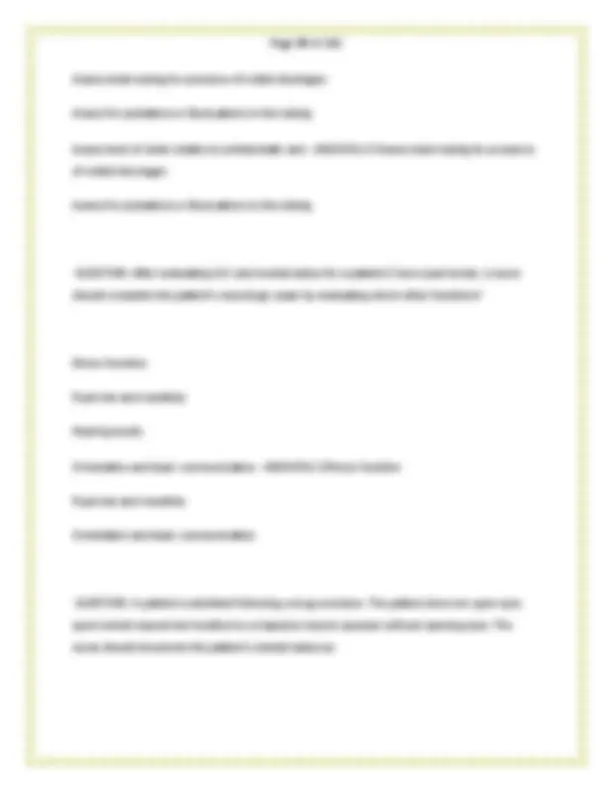
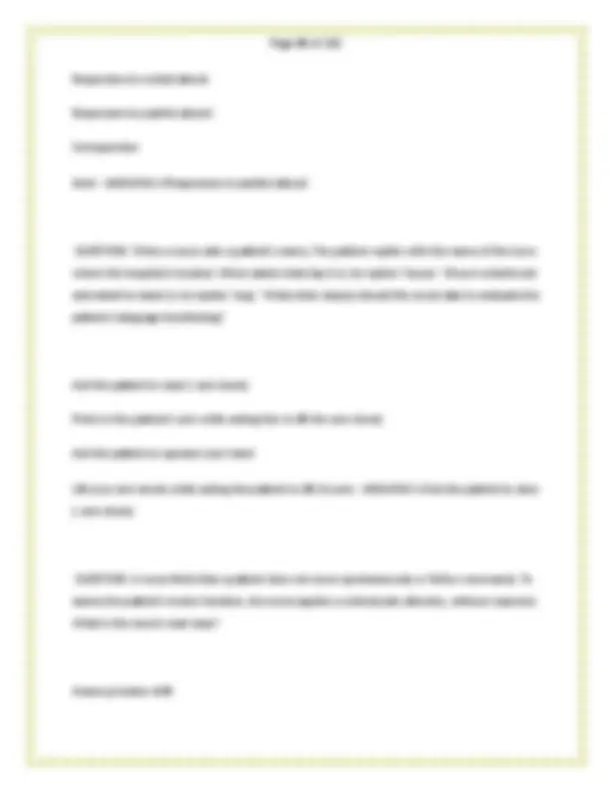
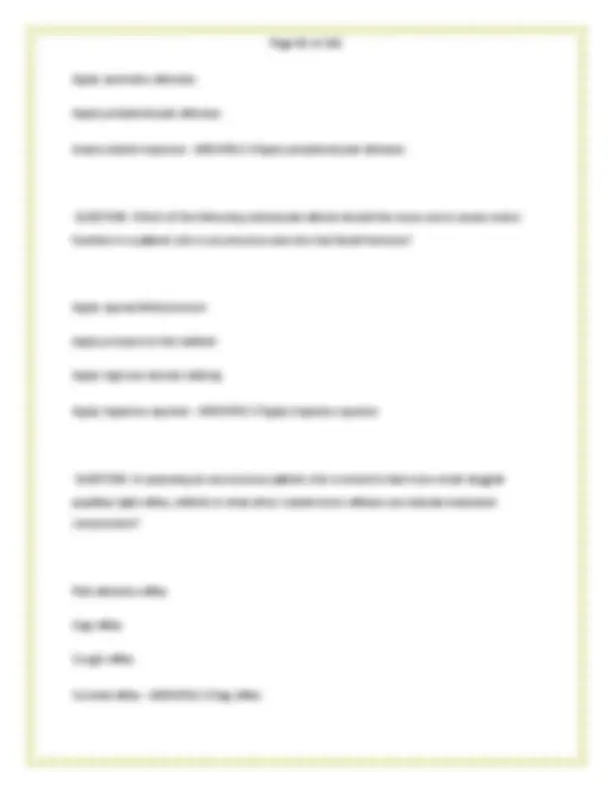
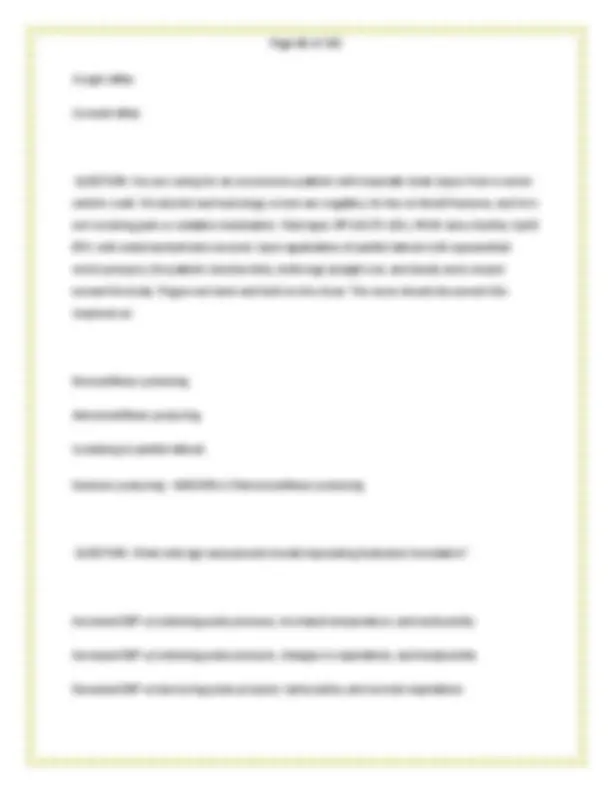
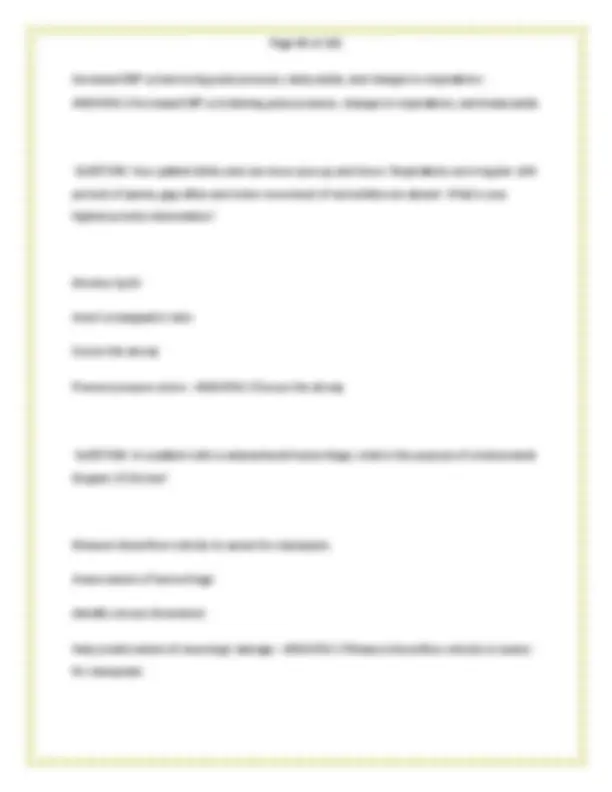
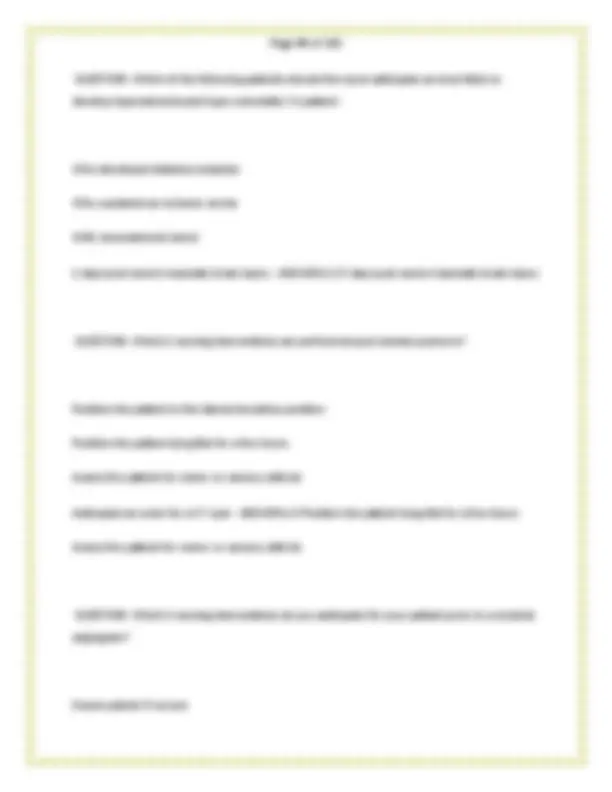
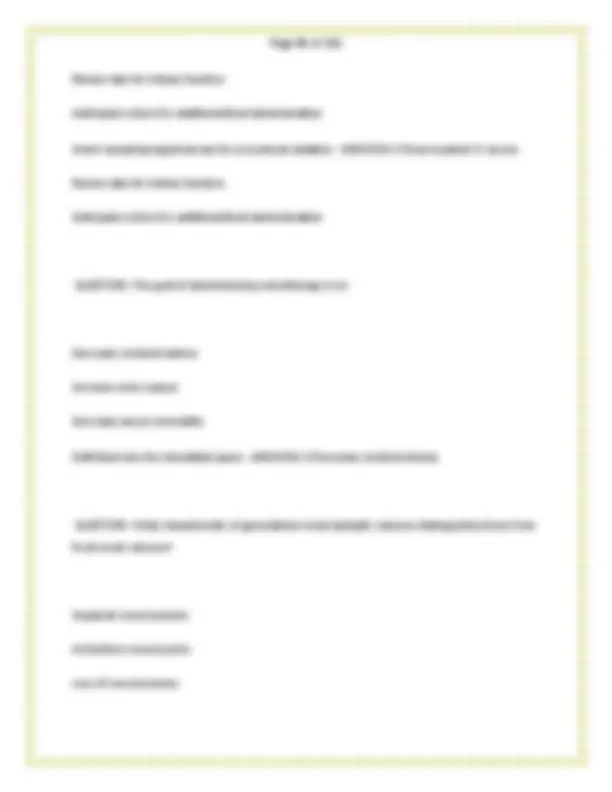
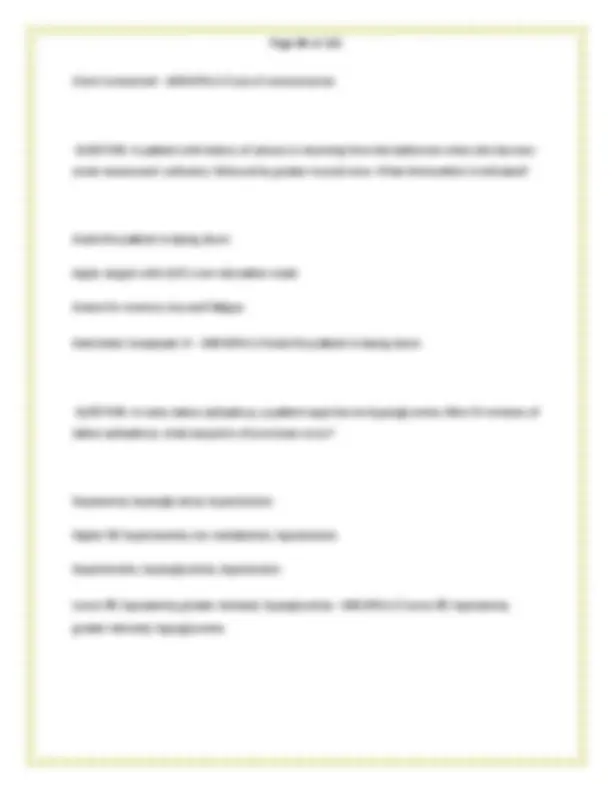
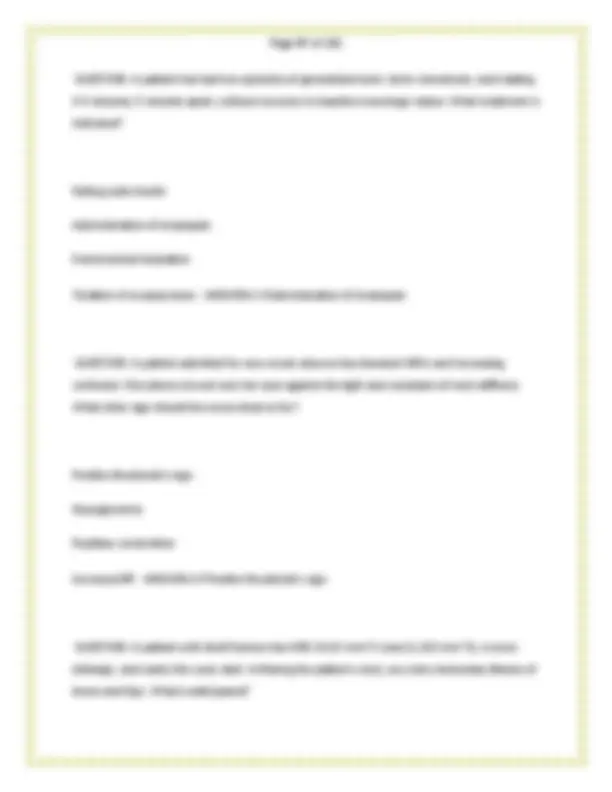
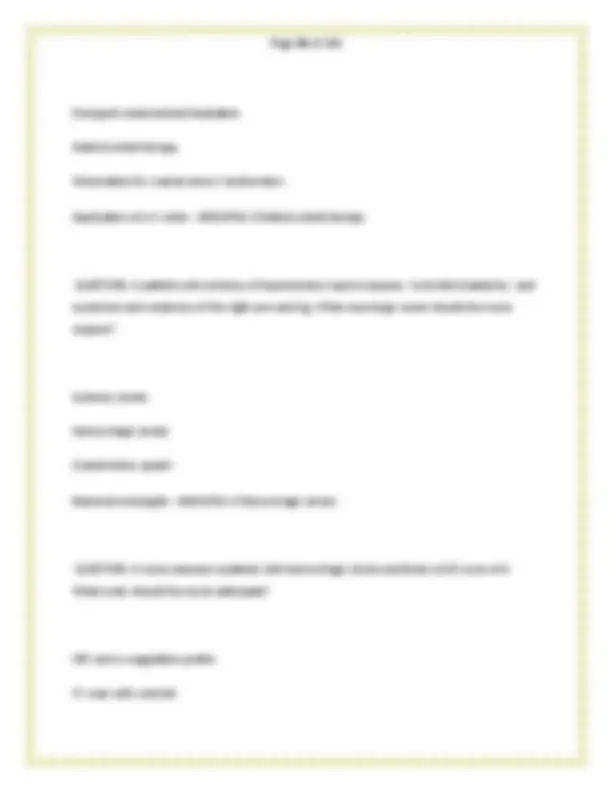
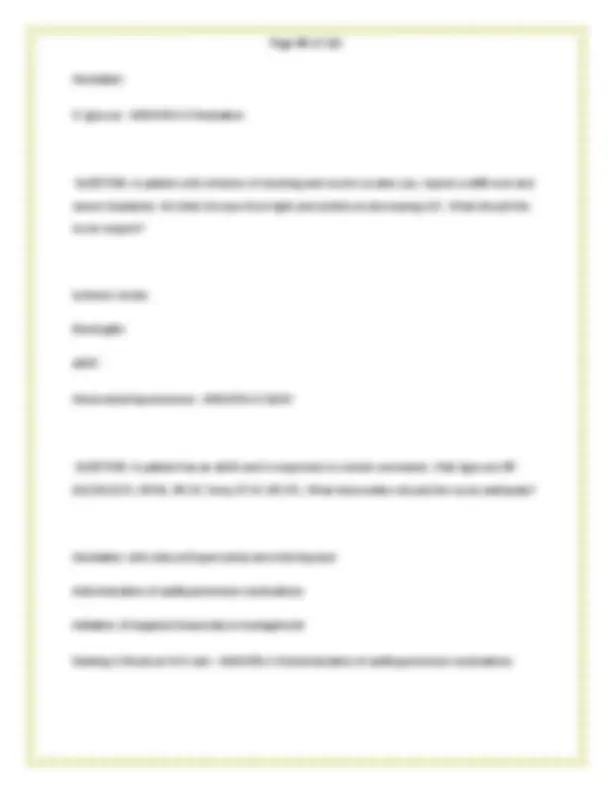
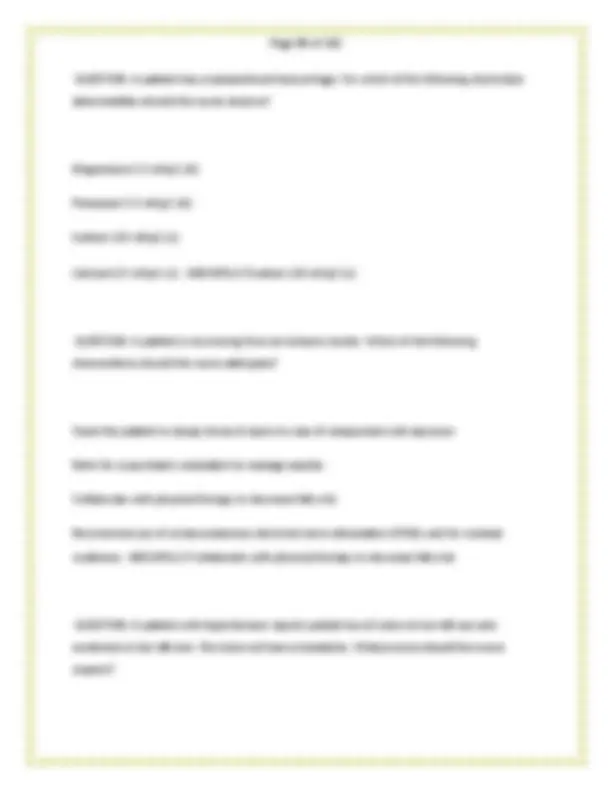
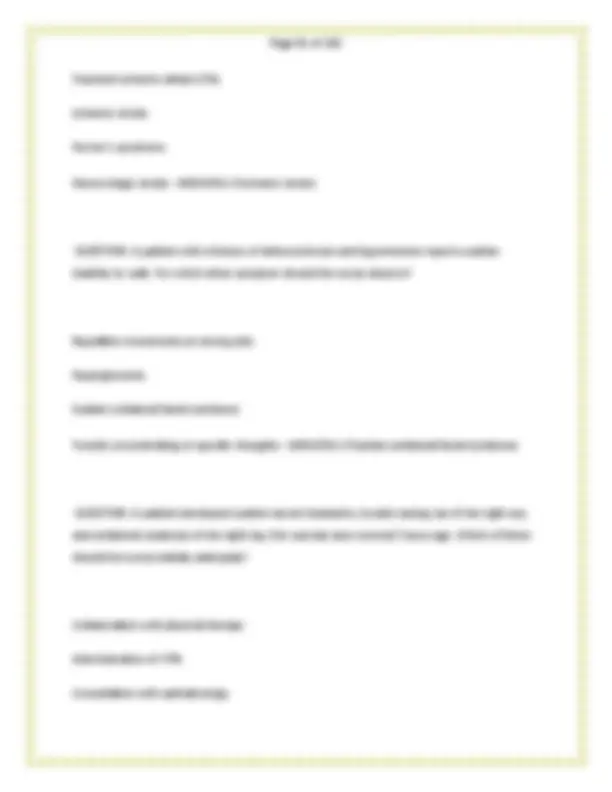
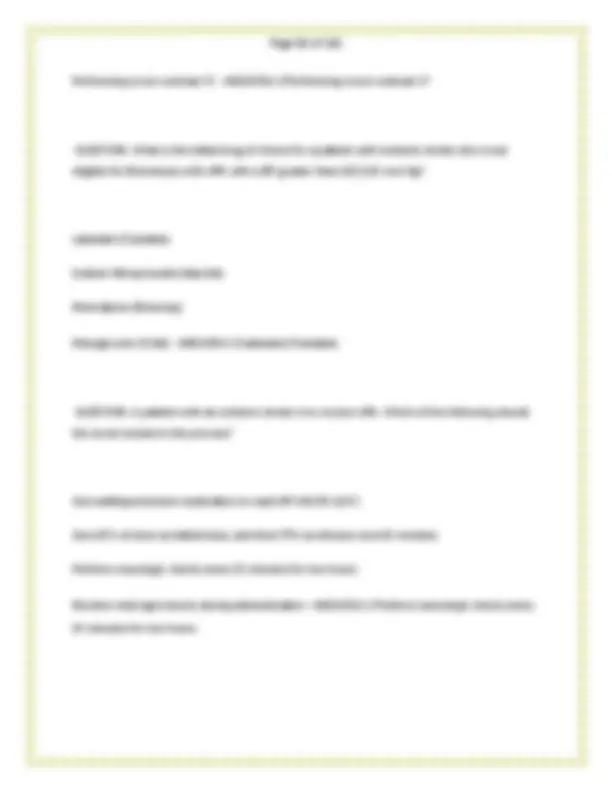
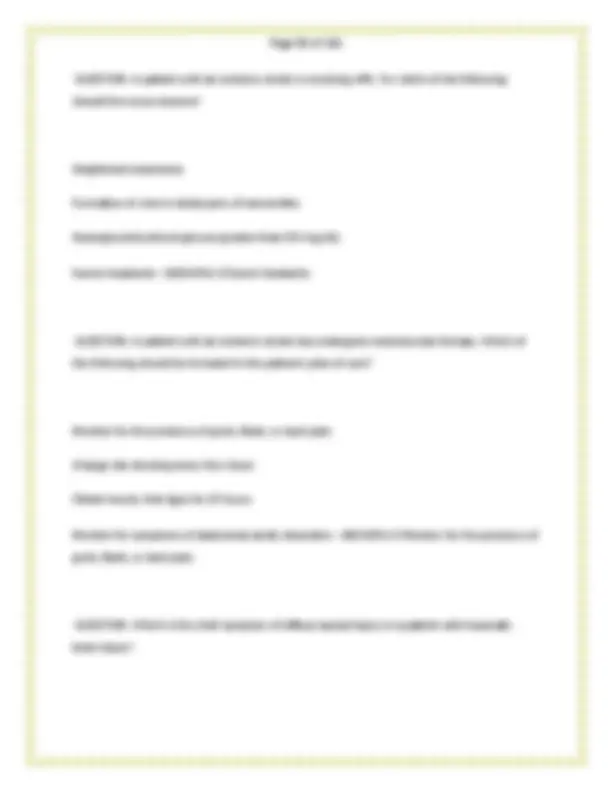
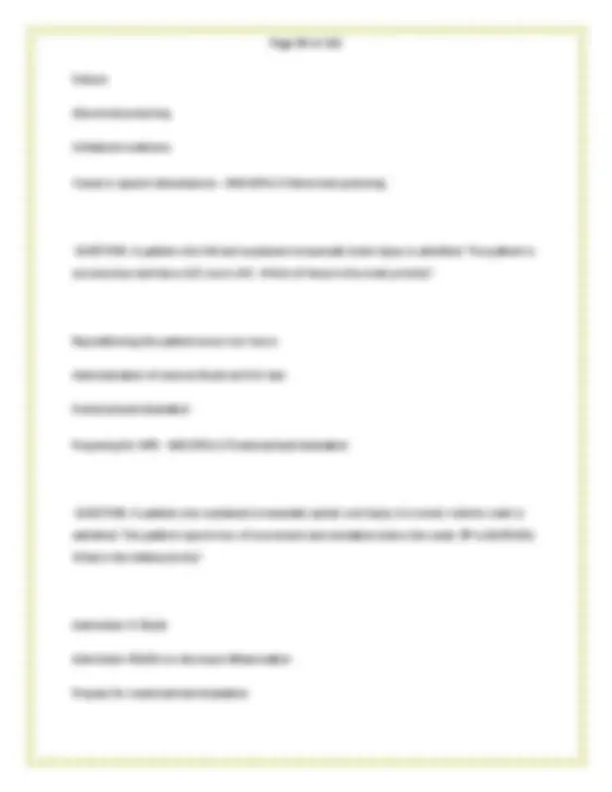
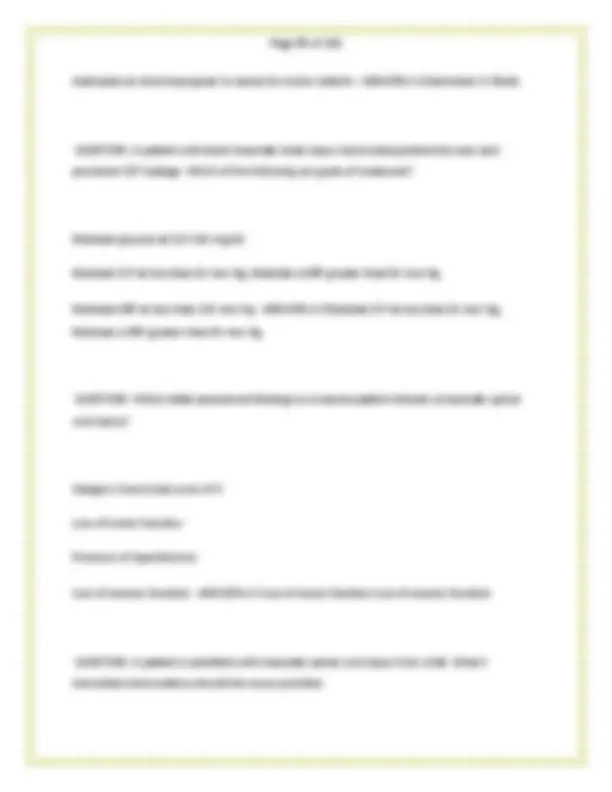
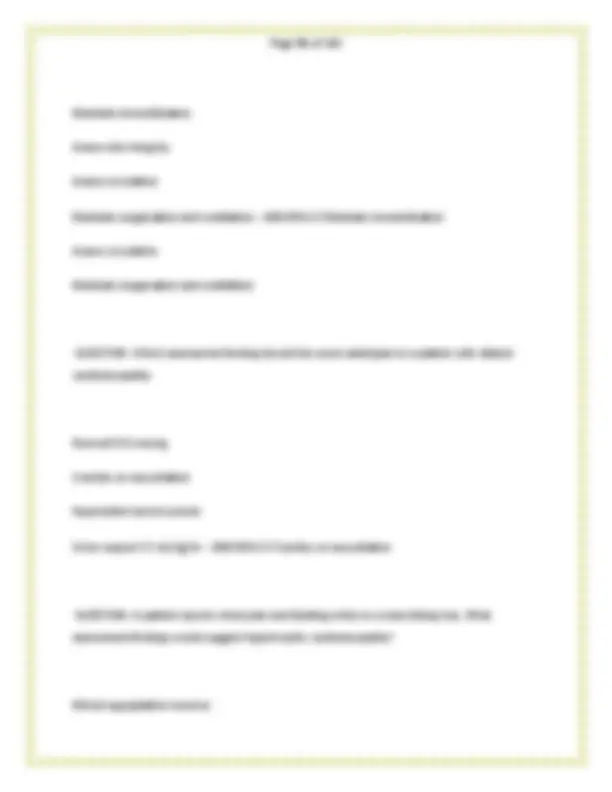
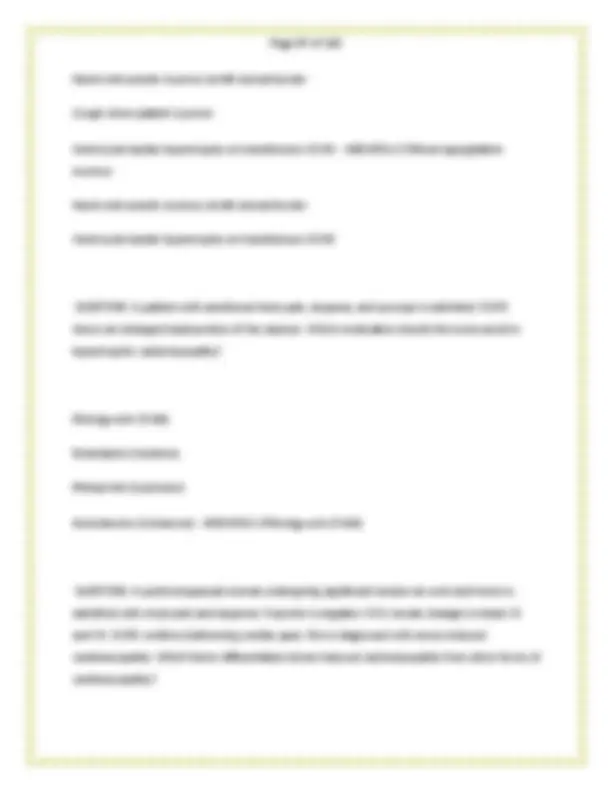
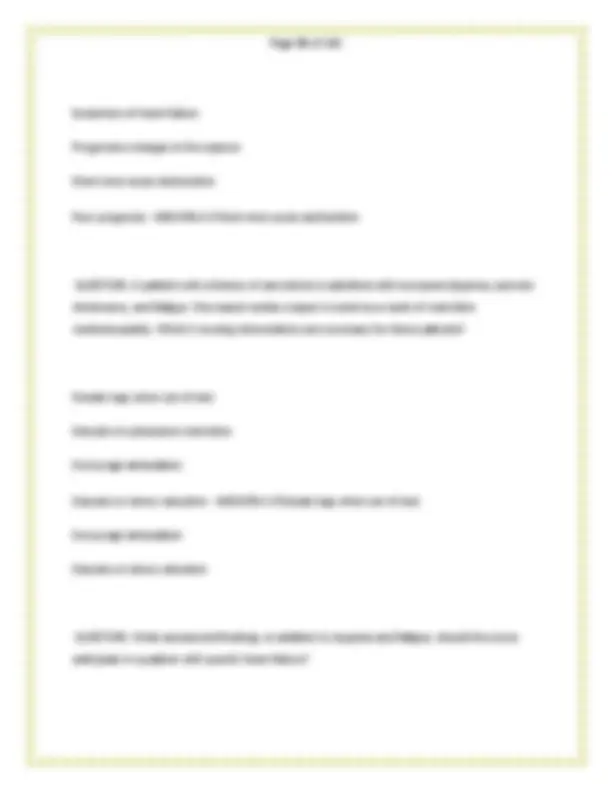
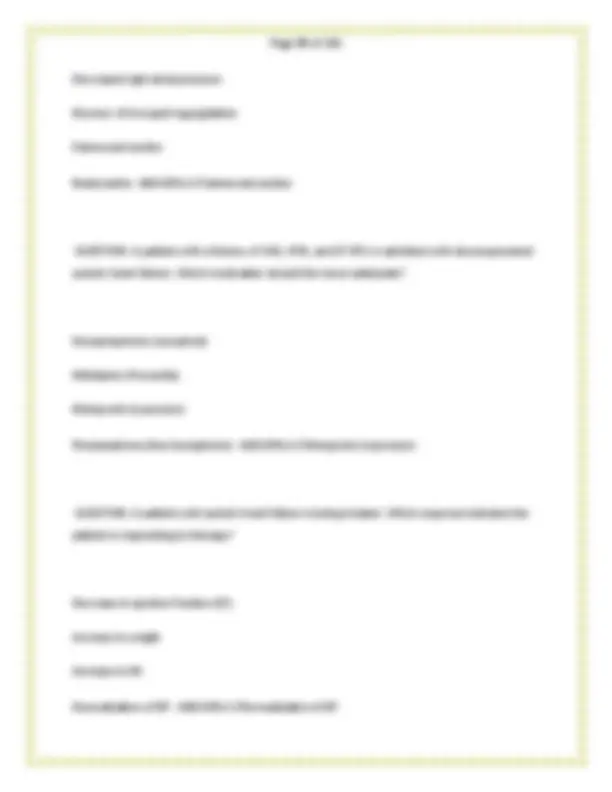
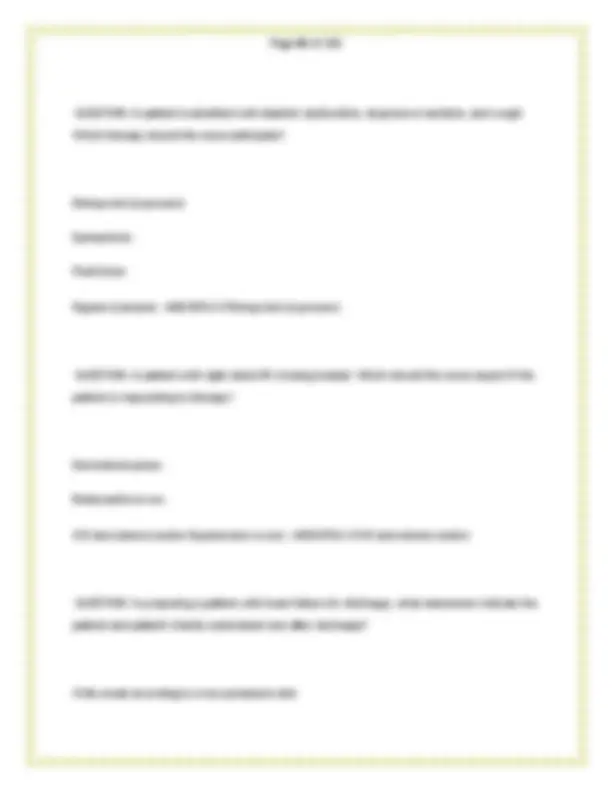
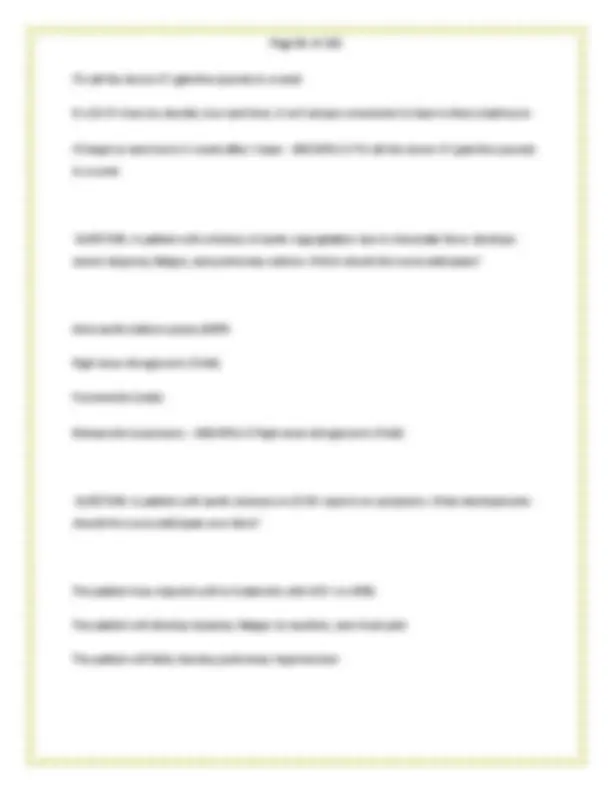
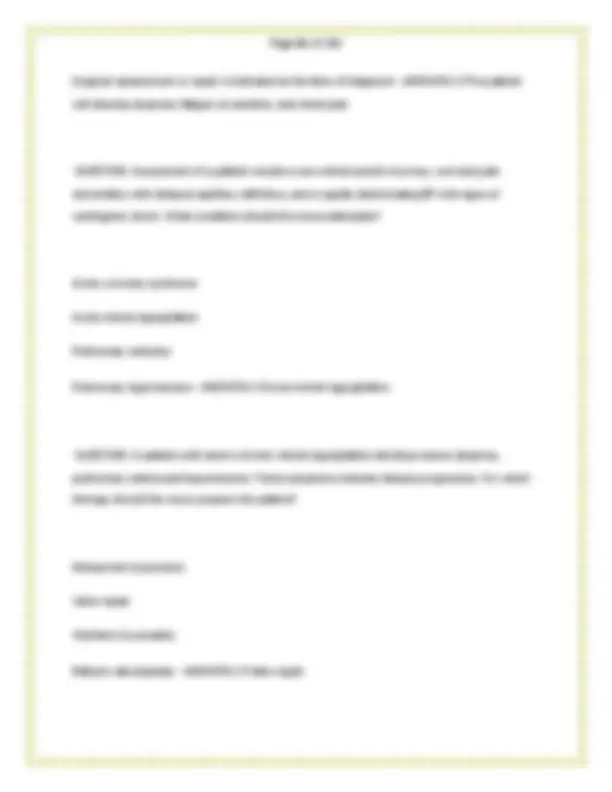
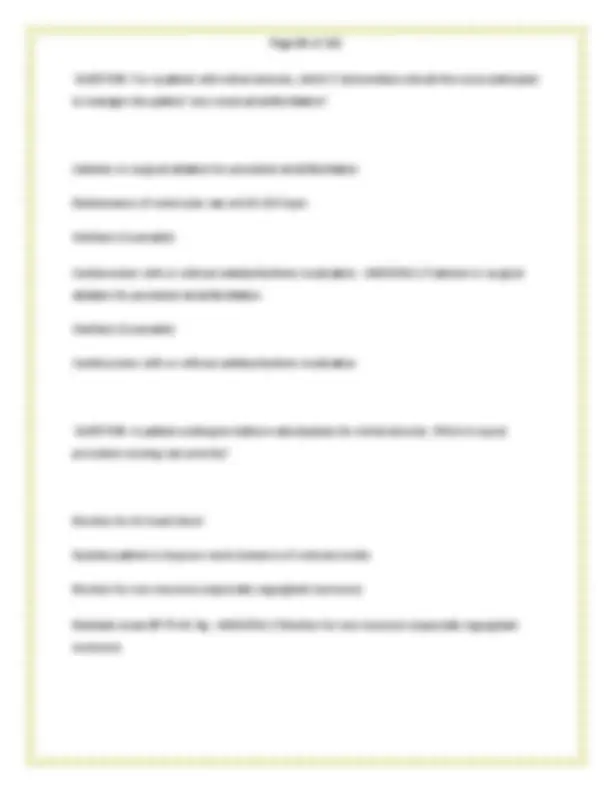
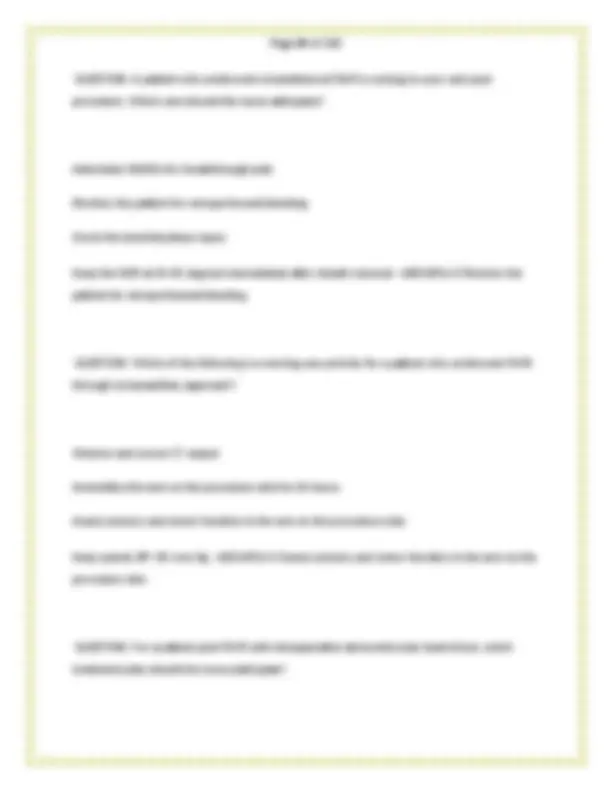
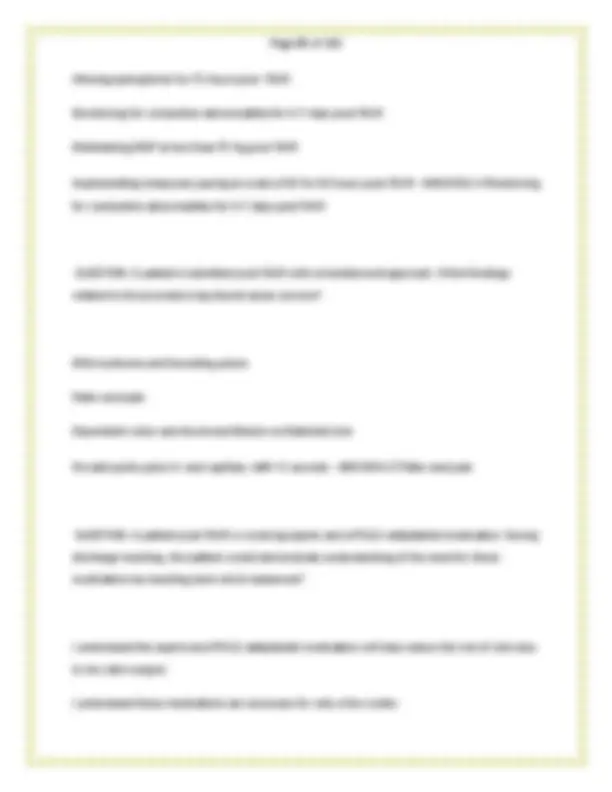

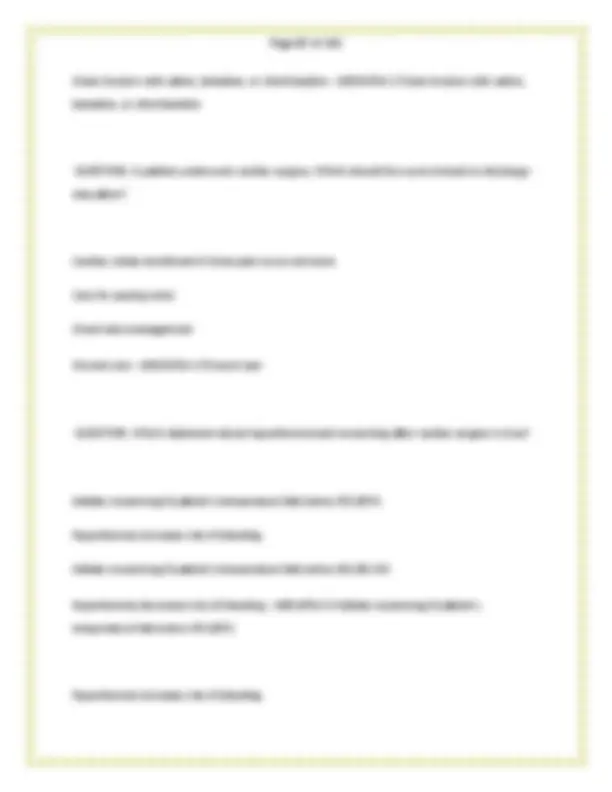
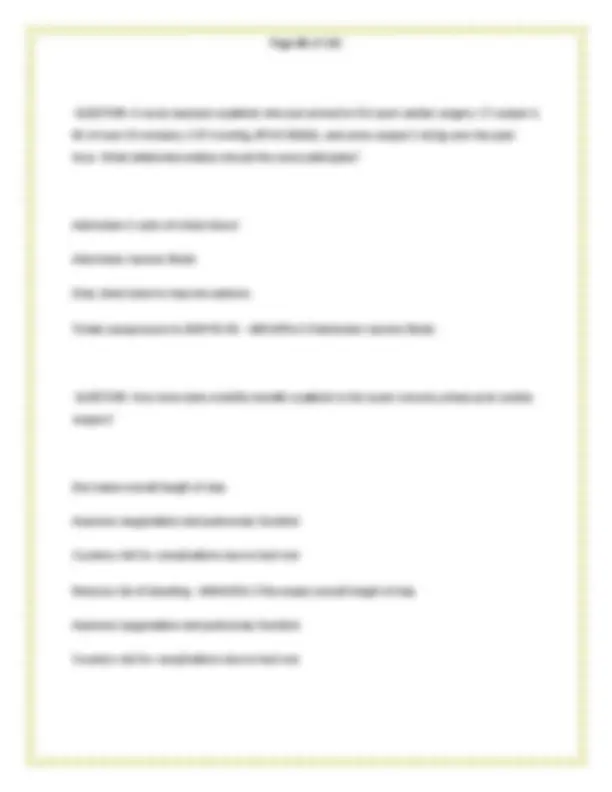
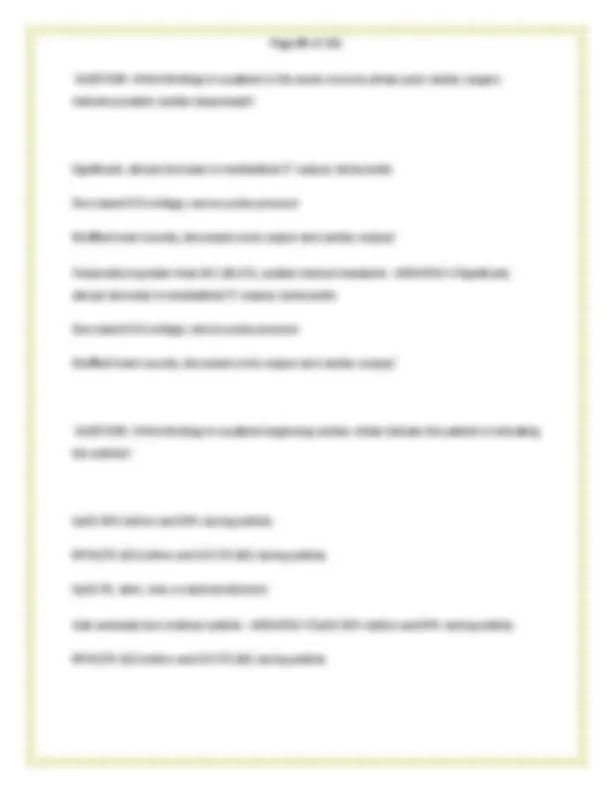
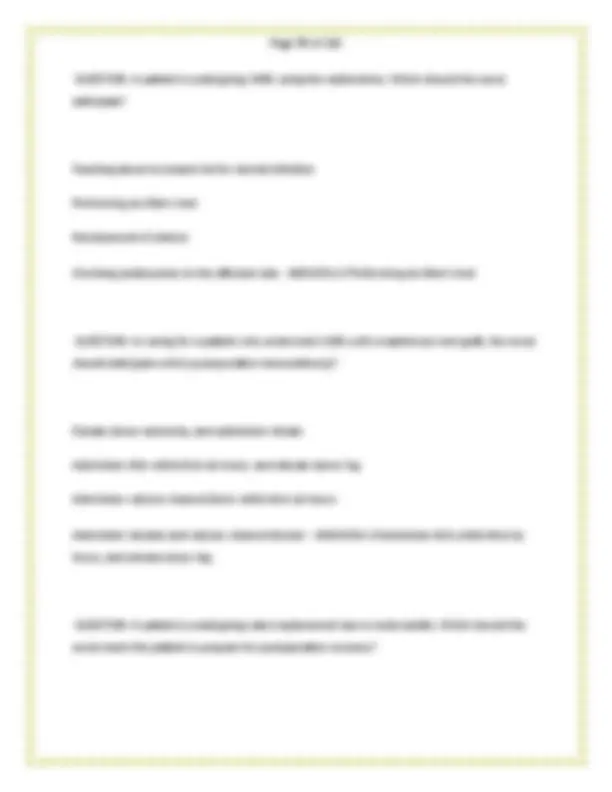
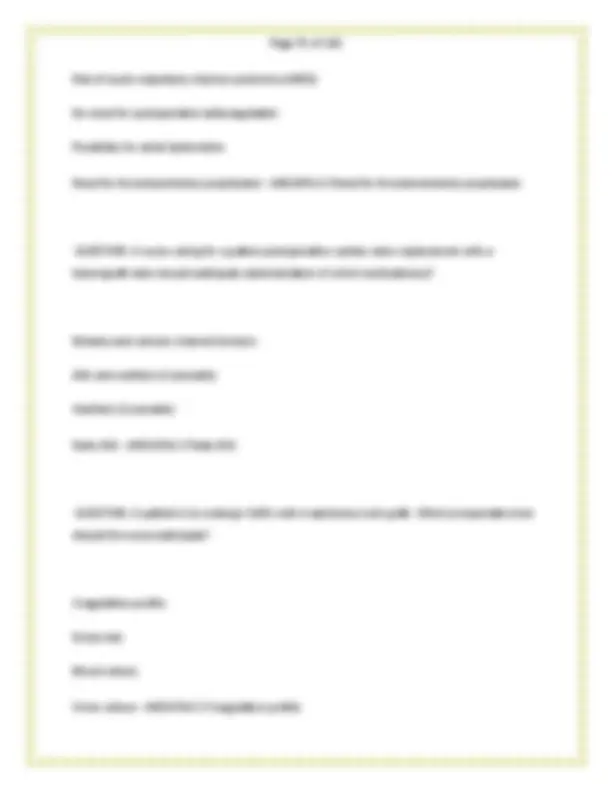

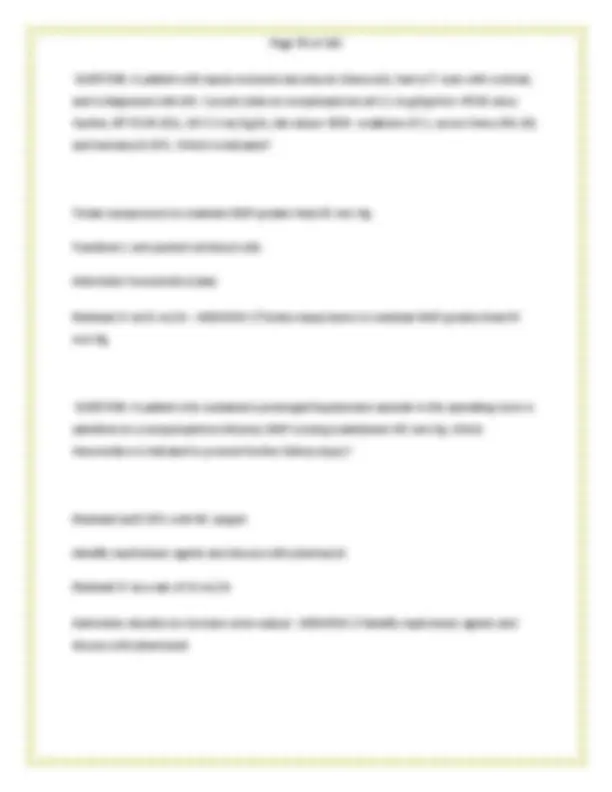
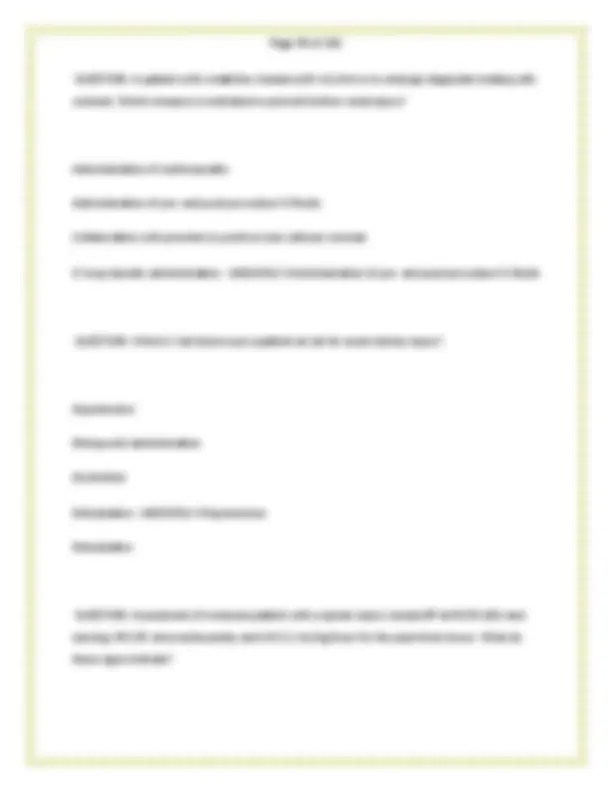
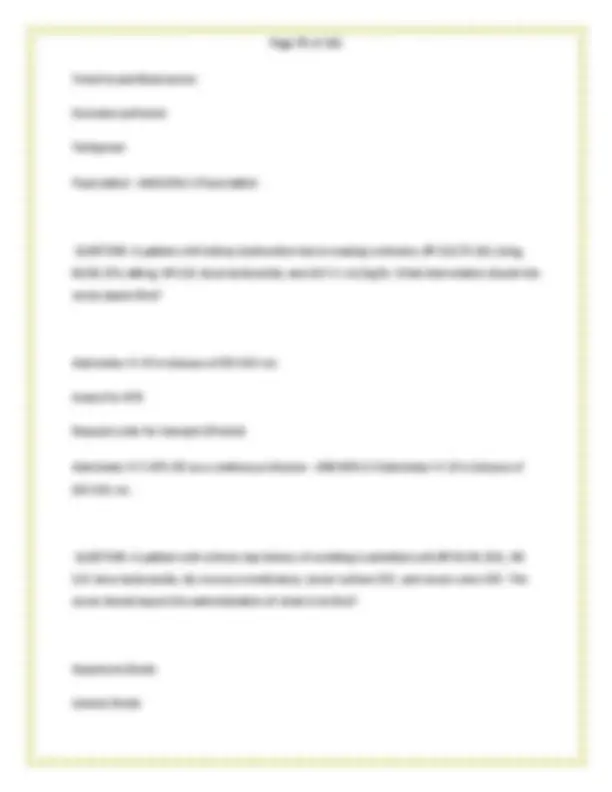
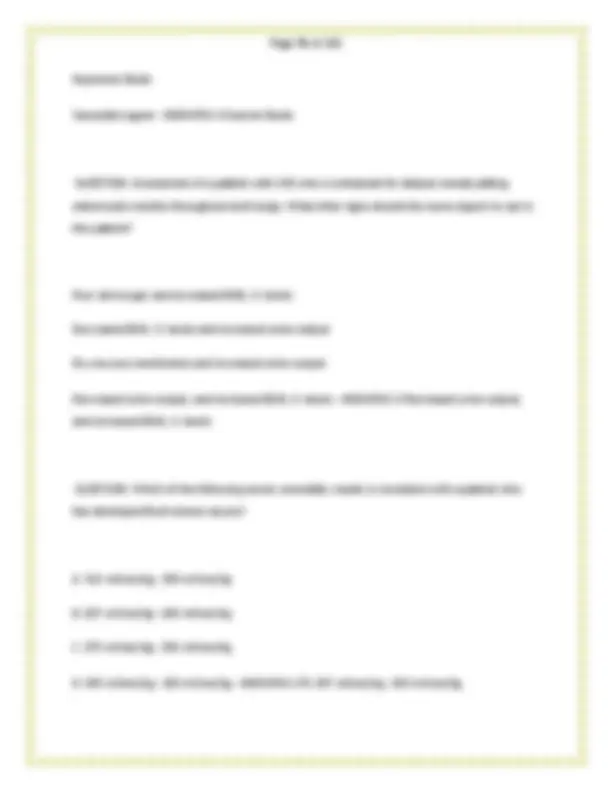
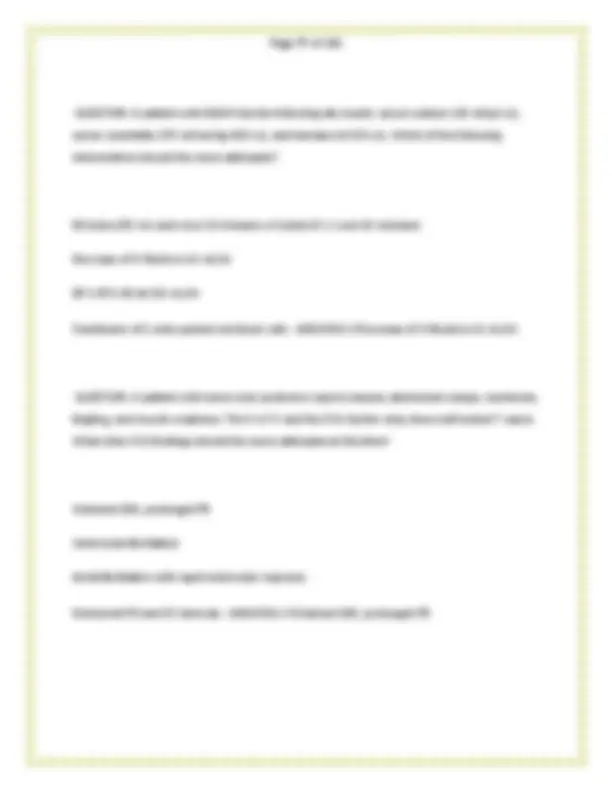
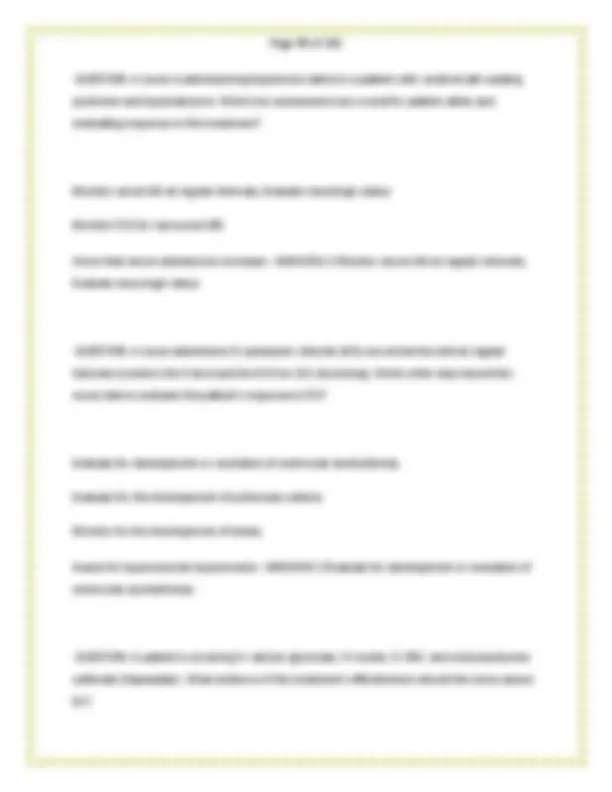
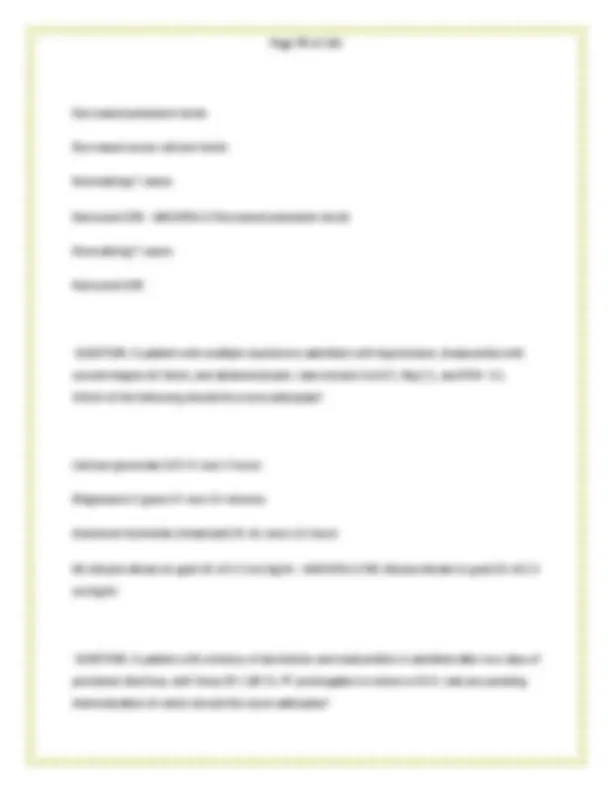
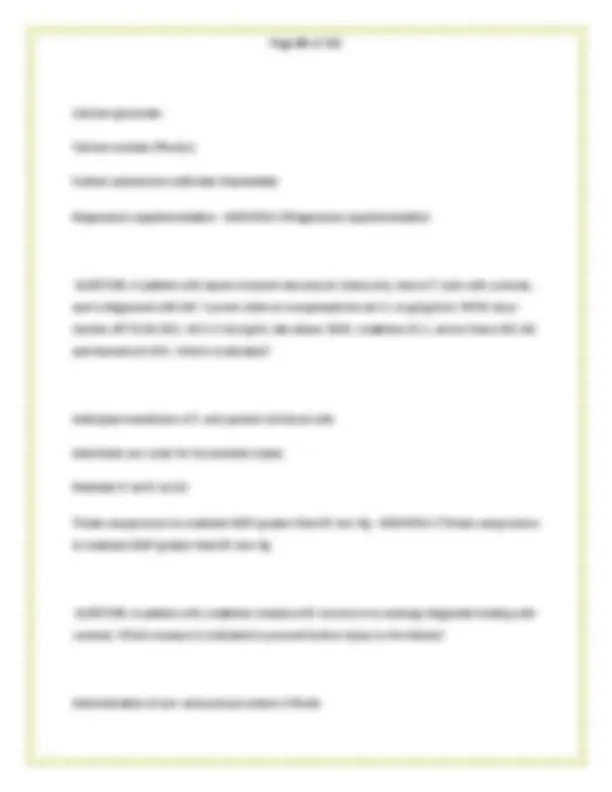
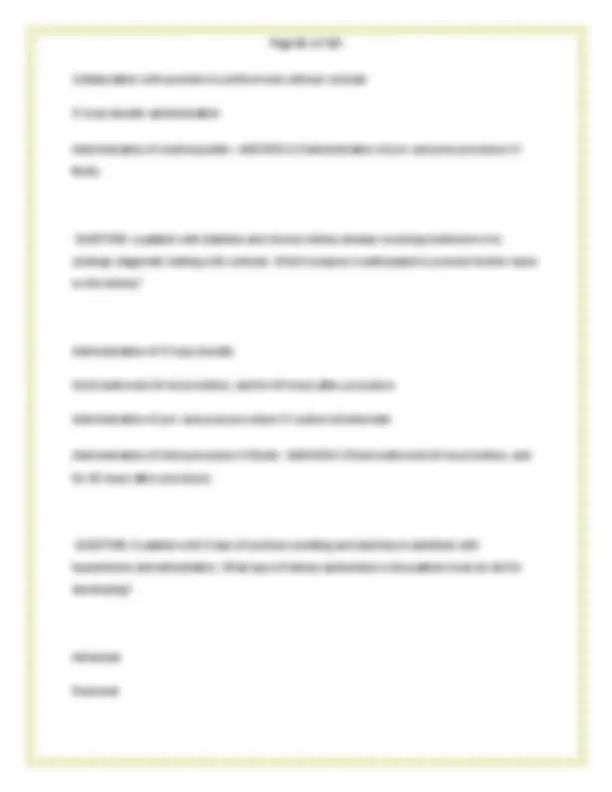
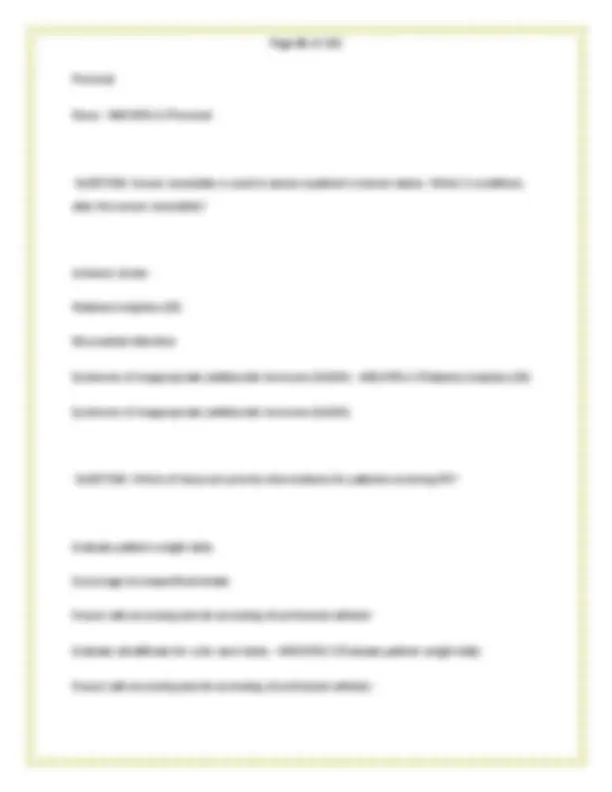
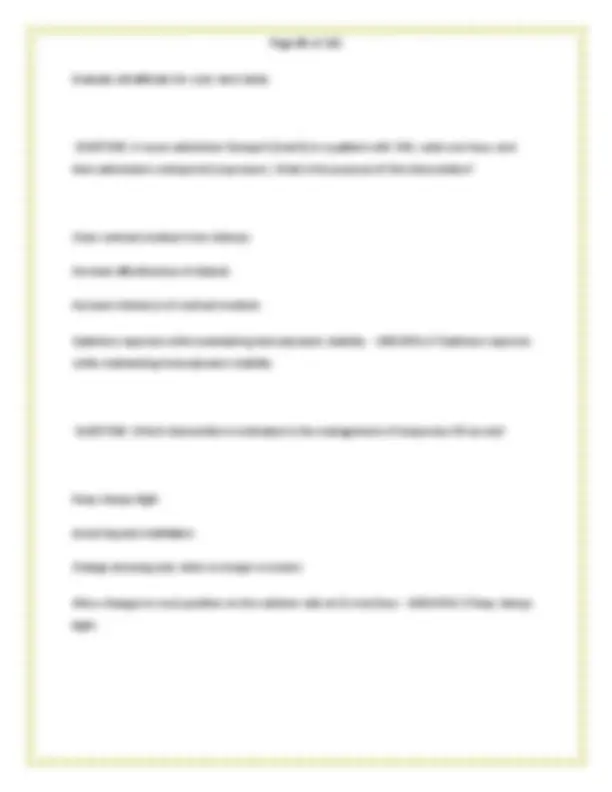
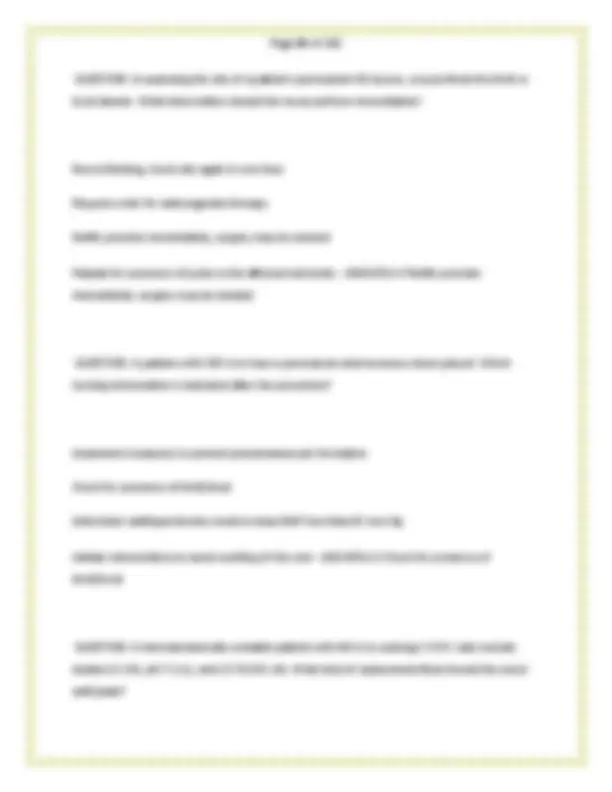
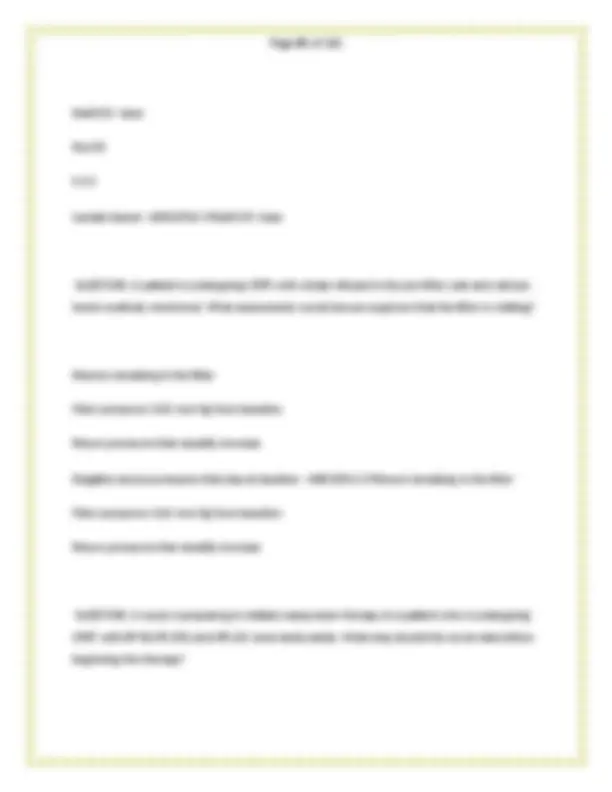
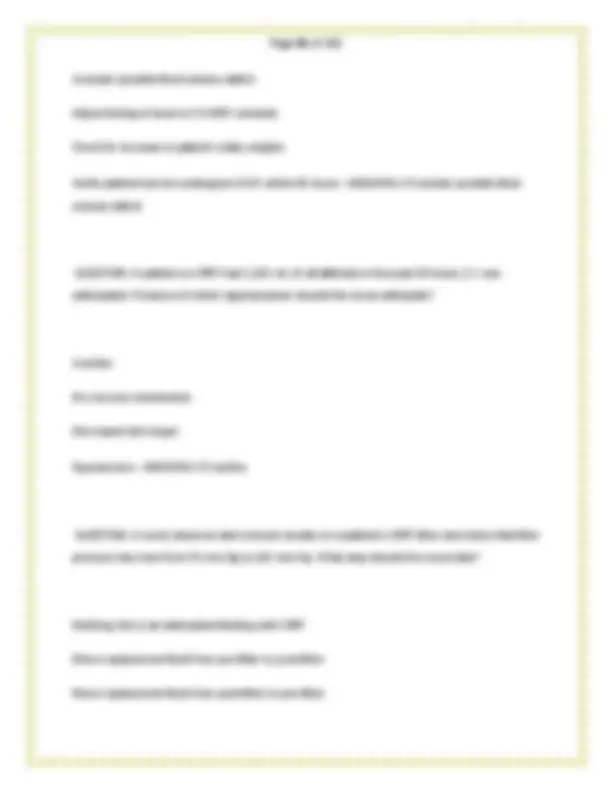
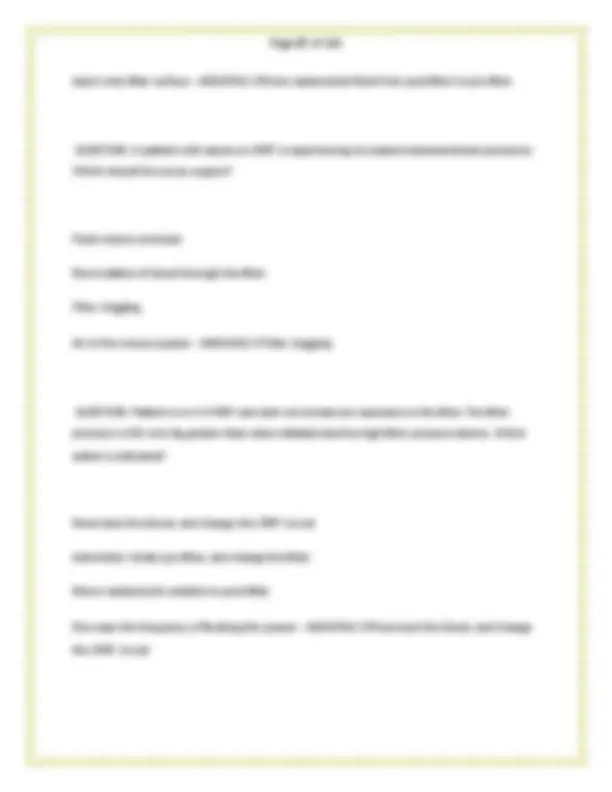

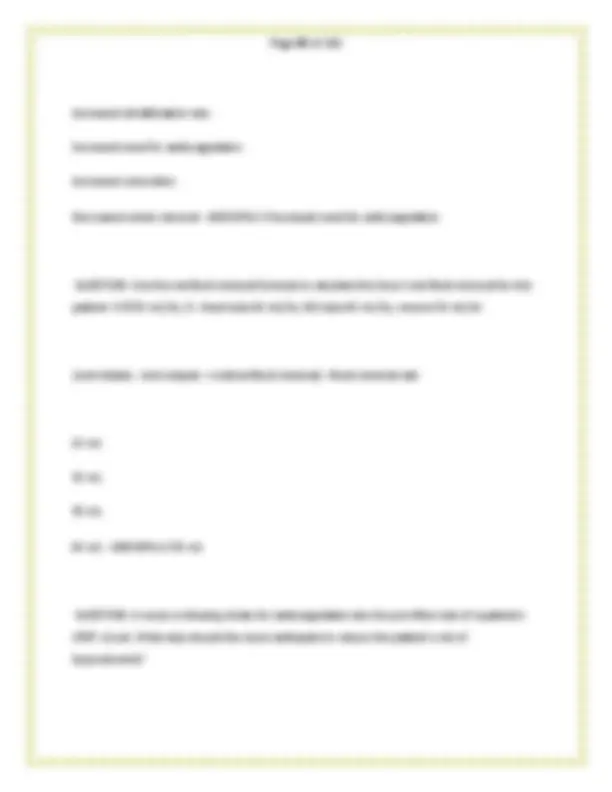
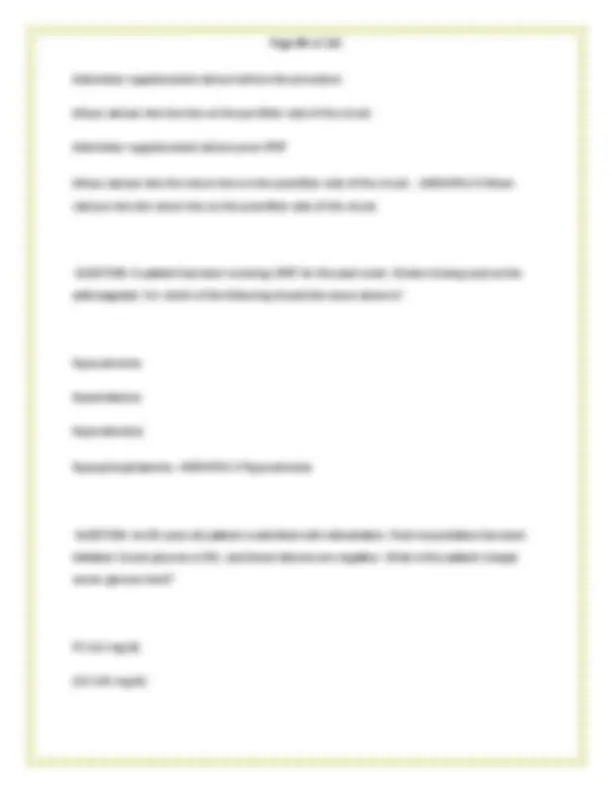
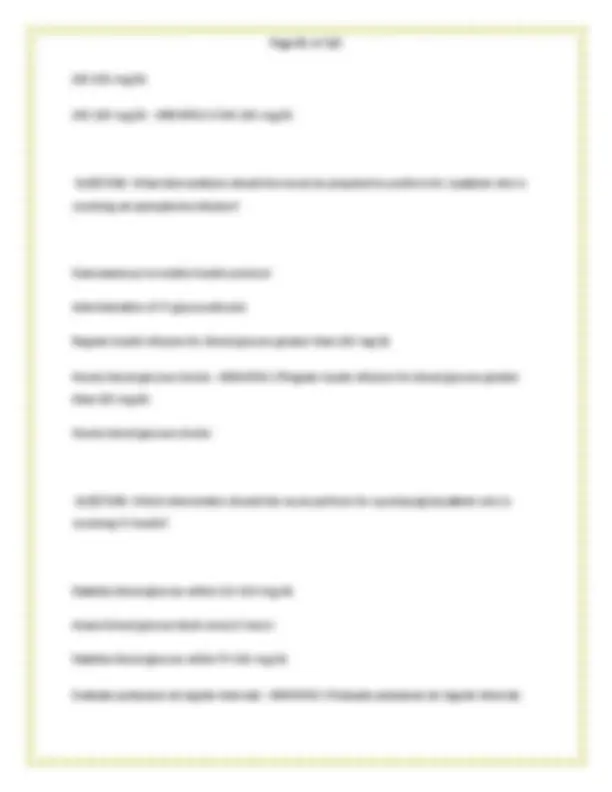
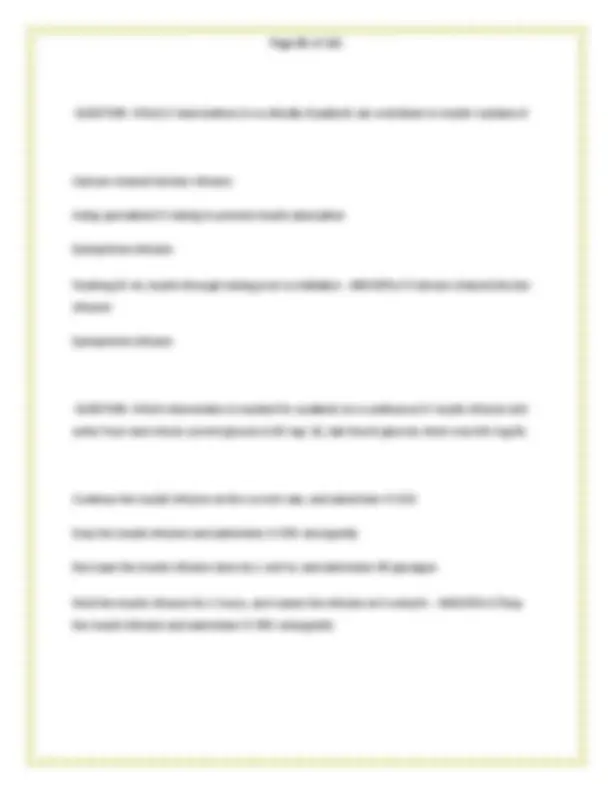
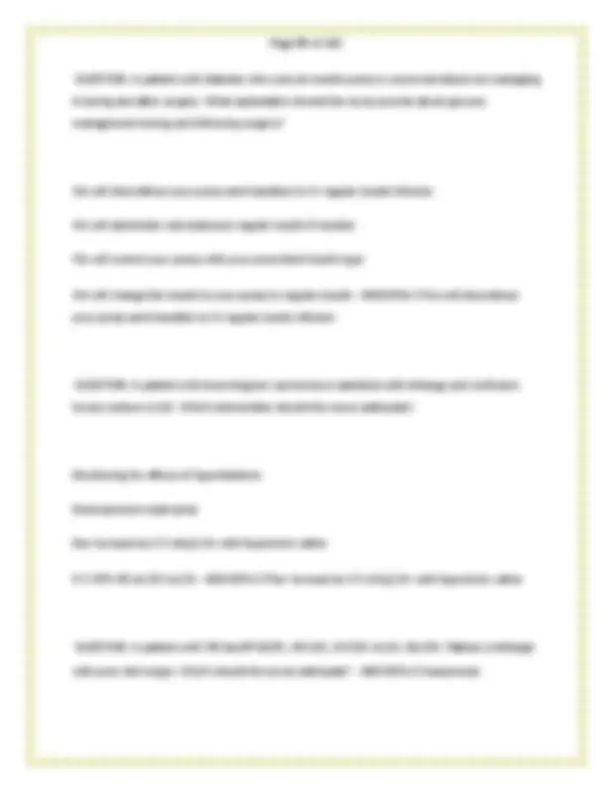
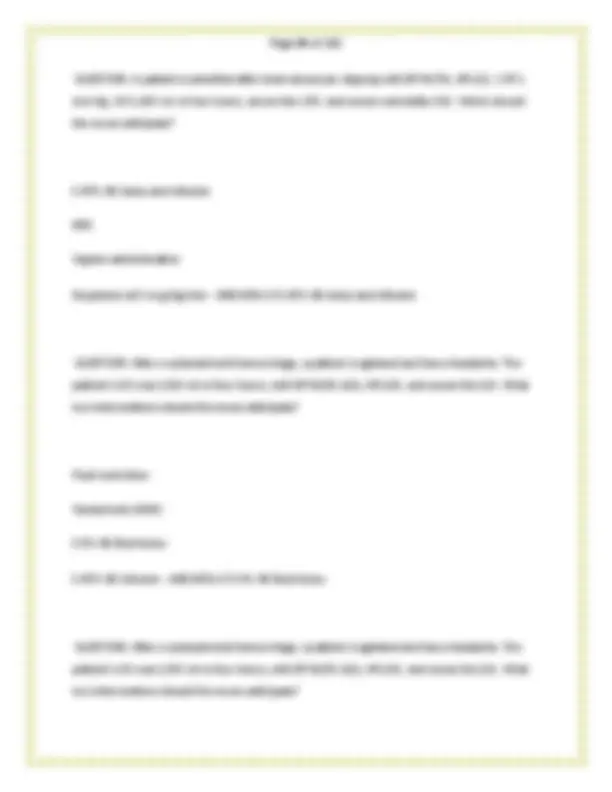
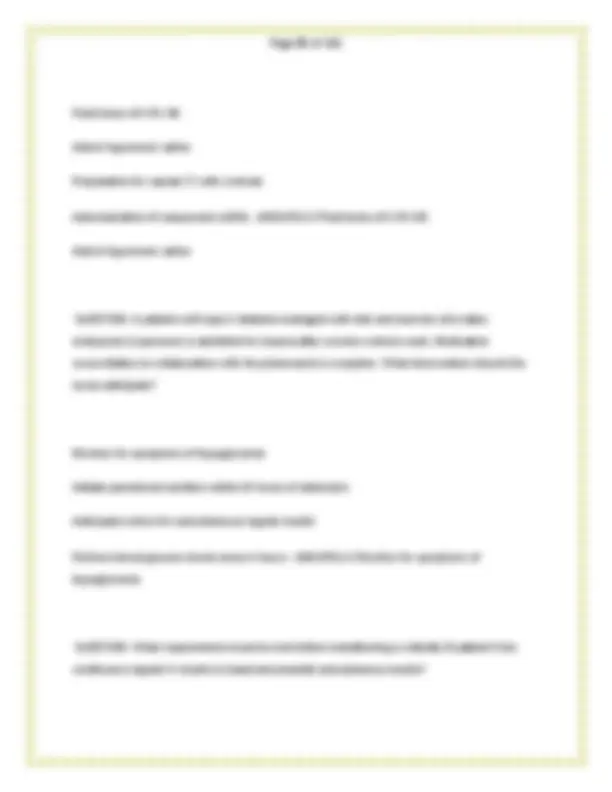
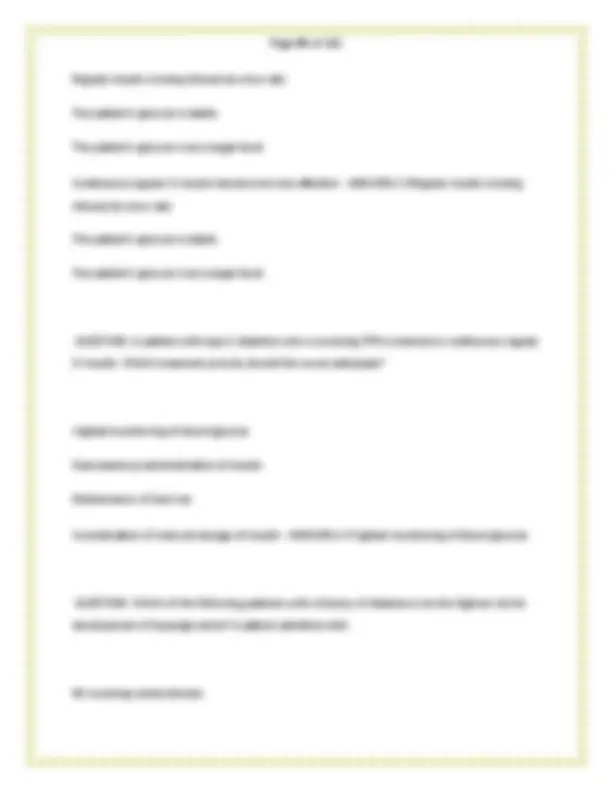
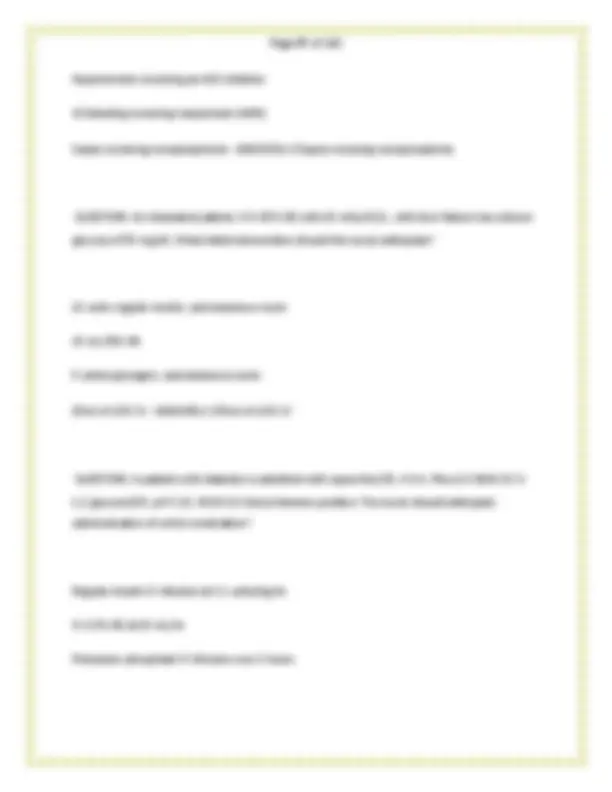
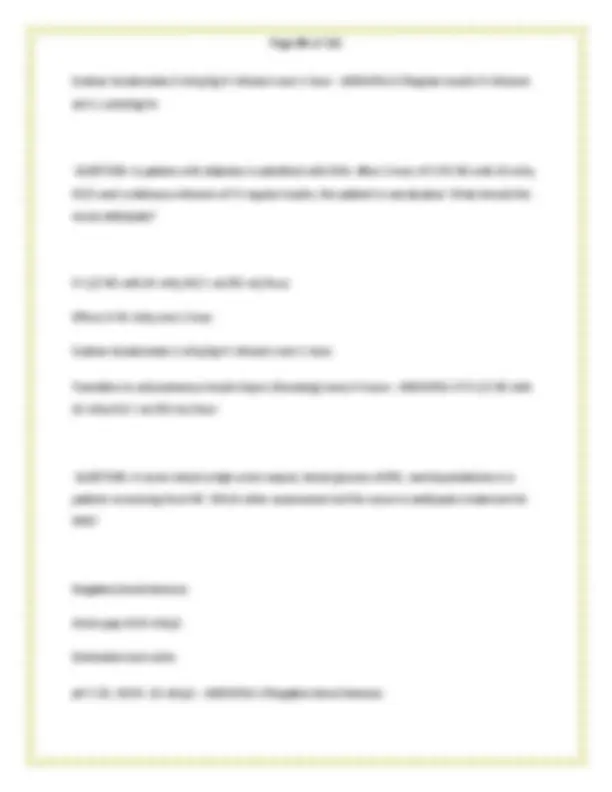
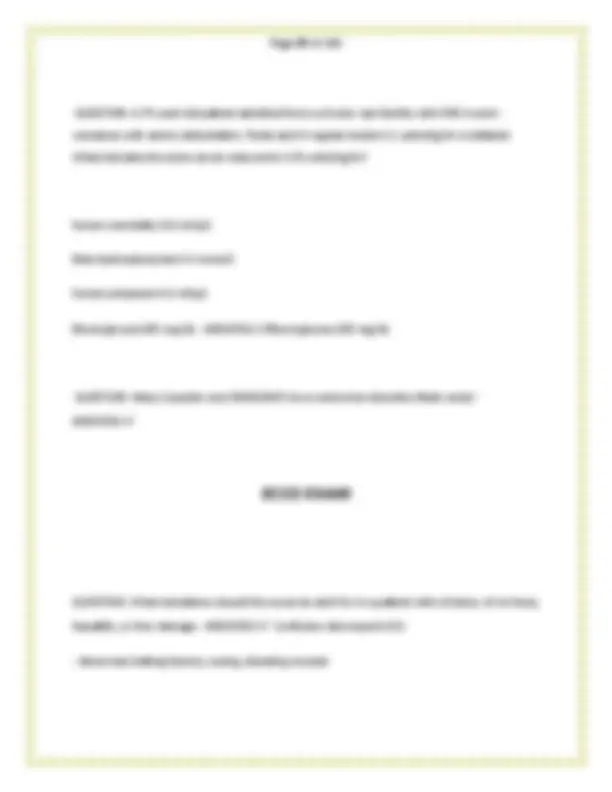
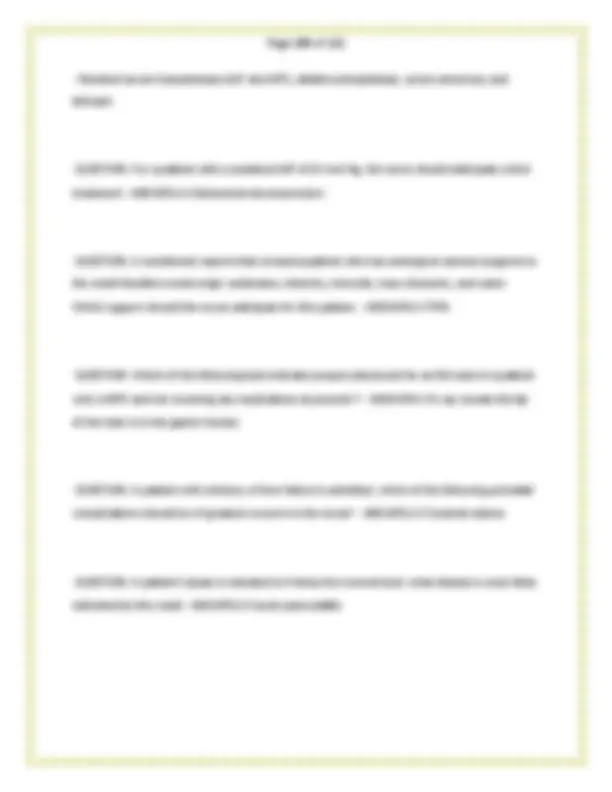


Study with the several resources on Docsity

Earn points by helping other students or get them with a premium plan


Prepare for your exams
Study with the several resources on Docsity

Earn points to download
Earn points by helping other students or get them with a premium plan
Community
Ask the community for help and clear up your study doubts
Discover the best universities in your country according to Docsity users
Free resources
Download our free guides on studying techniques, anxiety management strategies, and thesis advice from Docsity tutors
ECCO EXAM LATEST VERSION THIS YEAR WITH 350 QUESTIONS AND WELL ELABORATED ANSWERS JUST RELEASED.pdf
Typology: Exams
1 / 121

This page cannot be seen from the preview
Don't miss anything!




























































































QUESTION: A nurse finds a patient unresponsive and without a palpable pulse. Which of the following assessments is an indication for defibrillation? Ventricular fibrillation Cyanosis Pulse oximeter below 80 Asystole - ANSWER✔✔Ventricular fibrillation QUESTION: Which should the nurse include in preparing a patient for an electrophysiology study? "You'll see yourself in v tach on the screen" "The study calls for dye to be places in your IV" "You will be sedated for the procedure"
"Since you will be awake, you can eat a light breakfast" - ANSWER✔✔"You will be sedated for the procedure" QUESTION: A patient with a history of cocaine use reports headache, blurred vision, severe chest pain, nausea, and vomiting. Vital signs are: BP 214/136, HR 106, RR 24. Which priority is initially indicated? Emergent ophthalmology consult Implement a chest pain protocol Initiation of anti-emetic therapy Administration of an antihypertensive - ANSWER✔✔Administration of an antihypertensive QUESTION: A patient reports sudden onset of chest pain, and dyspnea. Which 3 assessment findings would differentiate whether the cause is ACS or pericarditis? Pericarditis pain often accompanied by severe headache ACS pain is not usually accompanied by fever Pericarditis chest pain increases with inspiration ACS chest pain doesn't alter when patient changes position - ANSWER✔✔ACS pain is not usually accompanied by fever
QUESTION: A patient has a transvenous temporary pacemaker in place. Pacemaker spikes are noted on the ECG, but they are not followed by a P wave or QRS complex. Which is initially indicated? Reposition patient on the right side Increase the sensitivity (set mV to a lower number). Check the connections. Decrease the mS (output) - ANSWER✔✔Check the connections. QUESTION: A patient has a epicardial temporary pacemaker in place at a rate of 70 and mA of
Watch to see whether the ICD terminated the dysrhythmia Place a magnet over the ICD Turn off the ICD, and insert a new battery Change the ICD to standby mode - ANSWER✔✔Watch to see whether the ICD terminated the dysrhythmia QUESTION: A nurse notes bradycardia in a patient admitted with subarachnoid hemorrhage and vomiting. What medications may increase the patient's risk of sudden cardiac death due to long QT syndrome? Anticholinergics or phosphodiesterase inhibitors Acetaminophen or calcium channel blockers ACE inhibitors or anticonvulsants Antibiotics or antidysrhythmics - ANSWER✔✔Antibiotics or antidysrhythmics QUESTION: Which patient is at greatest risk for development of torsades de pointes? A patient with a... QTc of 0.40 with hypercalcemia
Administer morphine IV push - ANSWER✔✔Prepare for pericardiocentesis QUESTION: A patient with a stab wound to the chest has VS: BP 80/40 (53), HR 112, and RR 24. Diminished heart sounds, dizziness, JVD, and weak pulses are noted. Which should the nurse anticipate? Administer fluid bolus Infuse dopamine Position patient in High Fowler's Prepare for pericardiocentesis - ANSWER✔✔Administer fluid bolus Prepare for pericardiocentesis QUESTION: A patient has the following ABG results: pH 7.25, PaCO2 43, PaO2 80, SaO2 91%, and HCO3- 18. What is the most likely underlying cause? Acute kidney injury COPD exacerbation Overconsumption of antacids Respiratory failure - ANSWER✔✔Acute kidney injury
QUESTION: Which ABG result requires provider be notified immediately? pH greater than 7. HCO3 greater than 25 pH less than 7. PaCO2 less than 40 - ANSWER✔✔pH less than 7. QUESTION: Which patient in the immediate postoperative period should be given a a NC or simple face mask? A patient requiring: FiO2 of 0.75 - 0. FiO2 of 0.4 or less Oxygen of greater than 15 L/min FiO2 of 0.55 - 0.90 - ANSWER✔✔FiO2 of 0.4 or less QUESTION: Which patient most likely to have indication for non-rebreather mask? A patient: Who is postoperative lobectomy
Check for dryness or irritation of eyes, nasal passages, and upper airway - ANSWER✔✔Assess respiratory rate and depth, and changes in LOC Examine skin for breakdown across nasal bridge or any pressure points. Check for dryness or irritation of eyes, nasal passages, and upper airway QUESTION: Which patient has an indication for oxygen therapy with a low-flow device? A patient: With severe hypoxemia With carbon monoxide poisoning Who is postoperative for brain tumor removal With smoke inhalation - ANSWER✔✔Who is postoperative for brain tumor removal QUESTION: A patient with COPD on positive pressure ventilation reports sudden chest pain. The nurse observes tracheal deviation, tachycardia, and shortness of breath. What 3 other conditions should the nurse expect? Increased PaO2 levels with decreased PaCO2 levels Decreased PaO2 levels with decreased PaCO2 levels Decreased chest excursion on 1 side
Decreased SaO2 level - ANSWER✔✔Decreased PaO2 levels with decreased PaCO2 levels Decreased chest excursion on 1 side Decreased SaO2 level QUESTION: A patient with a hemothorax and newly inserted chest tube with drainage system is admitted from the ED. Which intervention should the nurse anticipate? Prepare for needle decompression Observe for purulent drainage Attach chest tube drain to wall suction Clamp chest tube every 4 hours to check for an air leak - ANSWER✔✔Attach chest tube drain to wall suction QUESTION: A patient with a hemothorax is admitted. Which intervention should the nurse anticipate? Administer furosemide (Lasix) Prepare for chest tube insertion Anticipate daily chest x-ray Transfuse 1 unit of packed red blood cells - ANSWER✔✔Prepare for chest tube insertion
Continually monitor vital signs and SpO Obtain post-procedure ultrasound Position patient sitting on or lying near edge of bed - ANSWER✔✔Assist with attaching tube to evacuation collection bottle Continually monitor vital signs and SpO Position patient sitting on or lying near edge of bed QUESTION: Mr. DeMontel is admitted after a thoracotomy. He has a chest tube drainage system to his left chest with orders for suction at - 20 cm H2O. What is the priority nursing assessment? Maintain patient on bed rest Check the suction chamber for air leaks Ensure suction level changes as patient inhales and exhales Verify that the chest tube connection is secured - ANSWER✔✔Verify that the chest tube connection is secured. QUESTION: A patient who underwent a thoracotomy is admitted. Which intervention is indicated? Encourage use of incentive spirometer every 4 hours while patient is awake
Maintain on bed rest for 48 hours Maintain patency of chest drainage system Position patient only on nonoperative side - ANSWER✔✔Maintain patency of chest drainage system QUESTION: A patient who underwent a pneumonectomy is admitted. For which complication should the nurse observe? Hypovolemia Decrease capillary permeability Heightened awareness Increased cough with frothy sputum - ANSWER✔✔Increased cough with frothy sputum QUESTION: A patient post-pneumonectomy arrives on your unit with a clamped chest tube on the operative side. Which action do you anticipate? Unclamp and attach chest tube drainage to suction Maintain clamp and anticipate immediate chest tube removal Assess chest drain and chest tube for bleeding
QUESTION: Positioning the patient post-pneumonectomy should include which 2 interventions: Tilting the patient side to side every 2 hours Head of bed flat as tolerated Operative side lying 90 degrees lateral position Head of bed 30 degrees as tolerated - ANSWER✔✔Tilting the patient side to side every 2 hours Head of bed 30 degrees as tolerated QUESTION: Following a chest x-ray, for which report should the nurse notify the provider? Air bubbles are present in the stomach ETT is positioned in the right mainstem bronchus Trachea is midline Pneumonia is unresolved - ANSWER✔✔ETT is positioned in the right mainstem bronchus QUESTION: Which complication should the nurse observe for in a patient following bronchoscopy? Dysrhythmias
GI bleeding Hyperoxia Tracheomalacia - ANSWER✔✔Dysrhythmias QUESTION: Which condition may affect pulse oximetry accuracy? Room with dim lighting Cardiac arrest H&H 8 & 24 Peripheral vasodilation - ANSWER✔✔Cardiac arrest QUESTION: EtCO2 monitoring is indicated for which patient? Patient with normal respiratory rate and depth Patient receiving patient-controlled analgesia Patient with orders for palliative care Patient with decreased intracranial pressure - ANSWER✔✔Patient receiving patient-controlled analgesia
QUESTION: A patient with pulmonary artery hypertension is receiving epoprostenol. Which intervention is indicated? Warm the bag to room temperature before hanging If that patient reports shortness of breath, stop the infusion immediately Obtain pulmonary hemodynamics before hanging each new bag Have the next bag's tubing primed in advance - ANSWER✔✔Have the next bag's tubing primed in advance QUESTION: In a patient with pulmonary embolism, which sequelae should the nurse anticipate? Cardiac ischemia Increased coronary perfusion Right ventricular failure Hypoxemia - ANSWER✔✔Cardiac ischemia Right ventricular failure Hypoxemia
QUESTION: A patient with a hip fracture from a fall develops pleuritic chest pain, dyspnea, and dry cough. The patient's SPO2 is 90%. CTPA is positive for PE. The nurse should anticipate administration of which of the following? Unfractionated heparin Nitroglycerin (Tridil) Bronchodilator Cough suppressant - ANSWER✔✔Unfractionated heparin QUESTION: A patient admitted 48 hours ago has a temperature of 38.9 (102 F), cough with purulent sputum, crackles that don't clear and decreased right lower lobe breath sounds. Broad-spectrum antibiotics Furosemide (Lasix) Reposition patient with HOB 10-15 degrees Reposition patient on right side - ANSWER✔✔Broad-spectrum antibiotics QUESTION: A patient is admitted with tachycardia, wheezing, and a nonproductive cough. Which treatment(s) should the nurse anticipate?